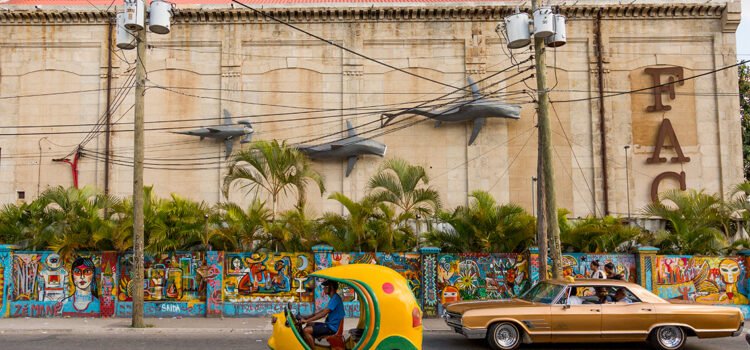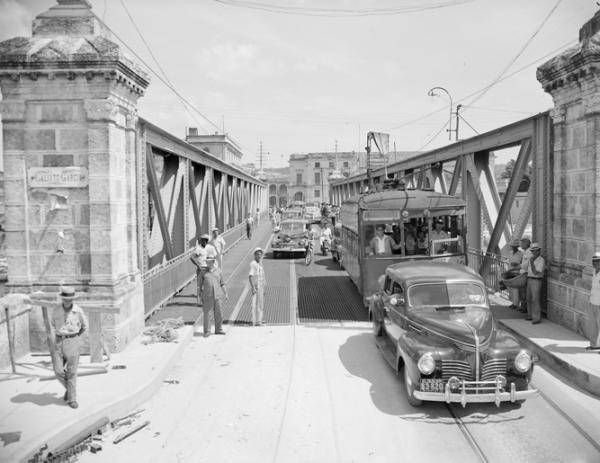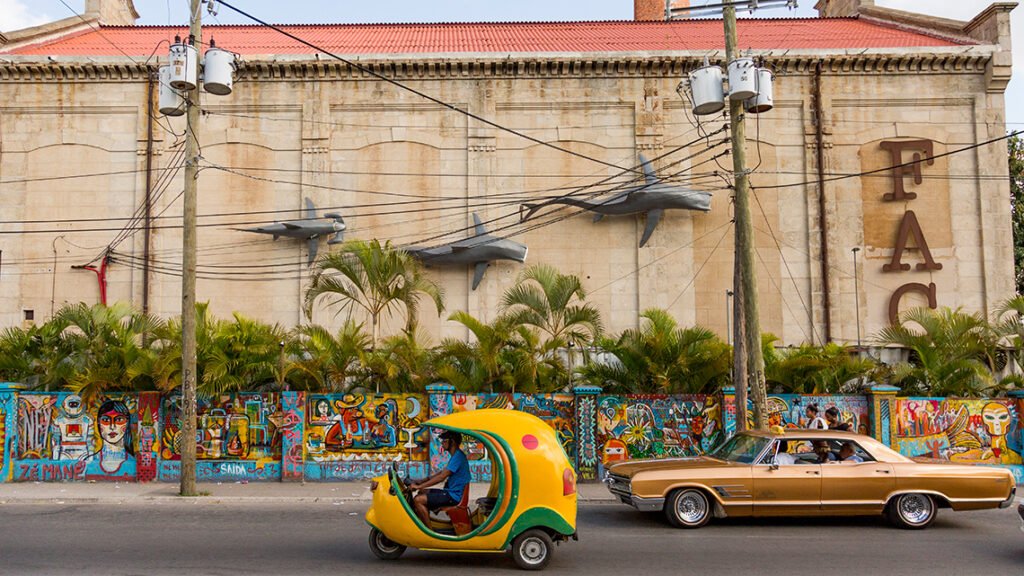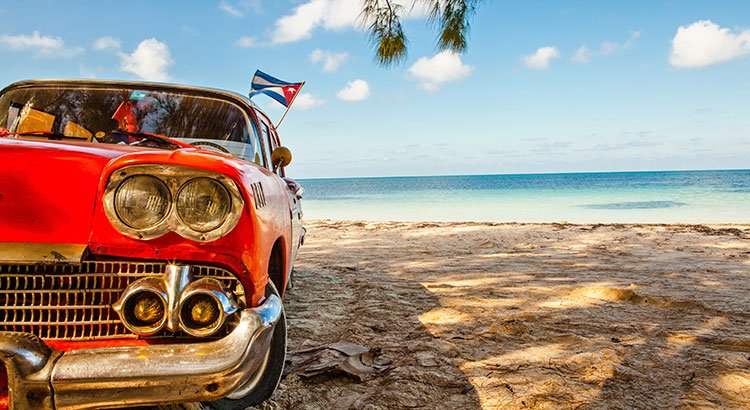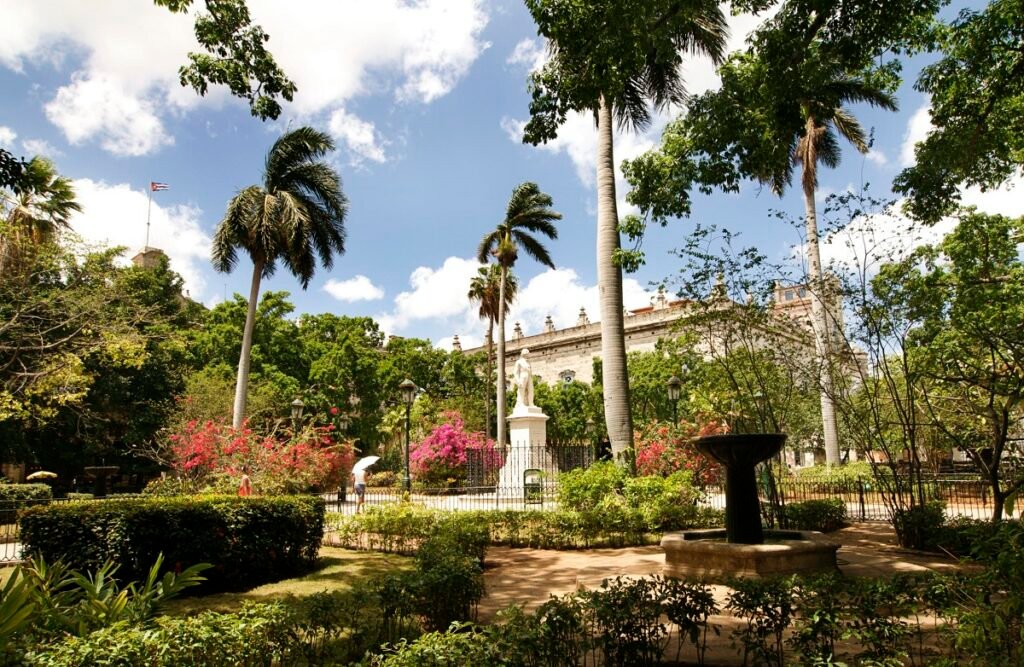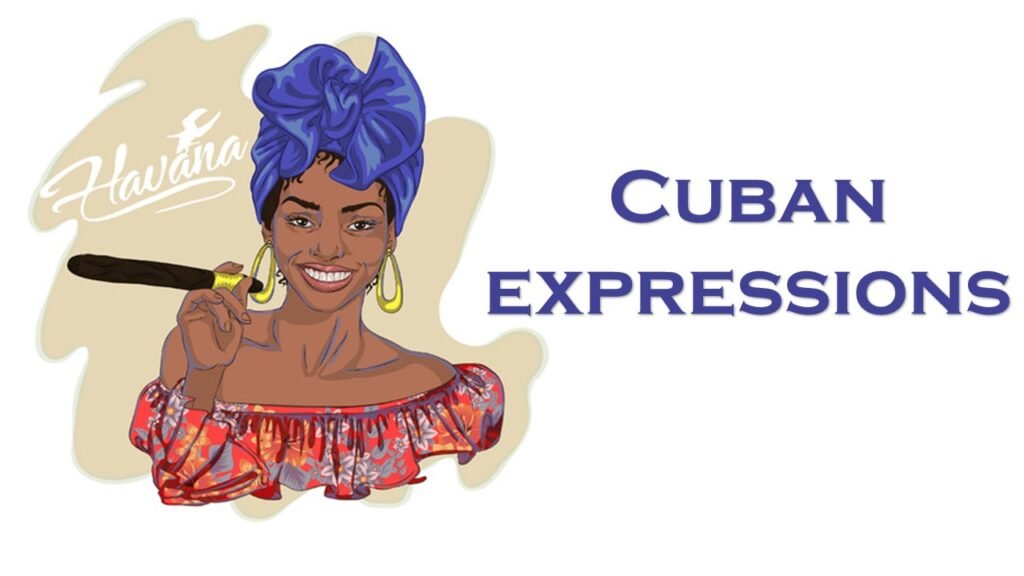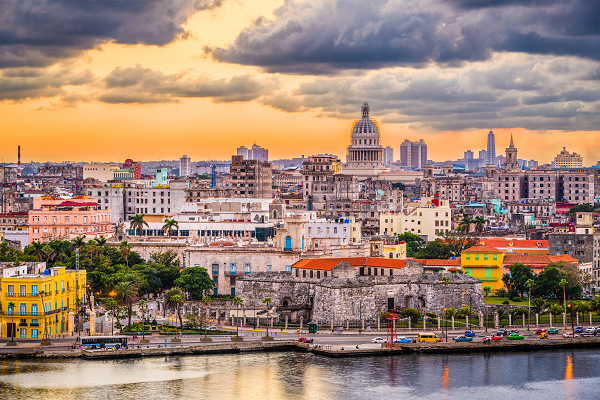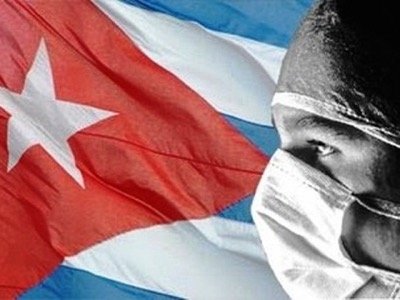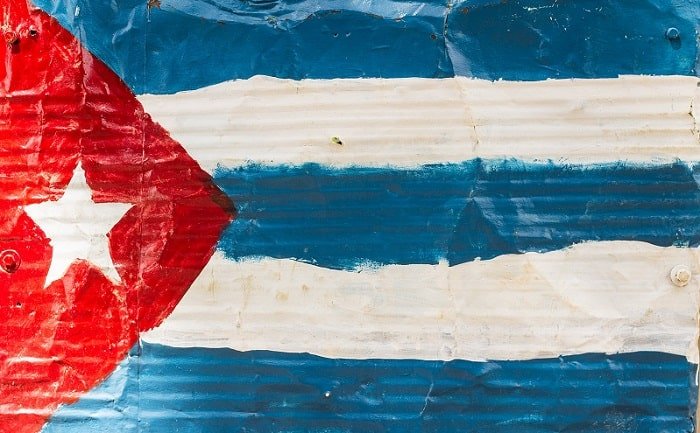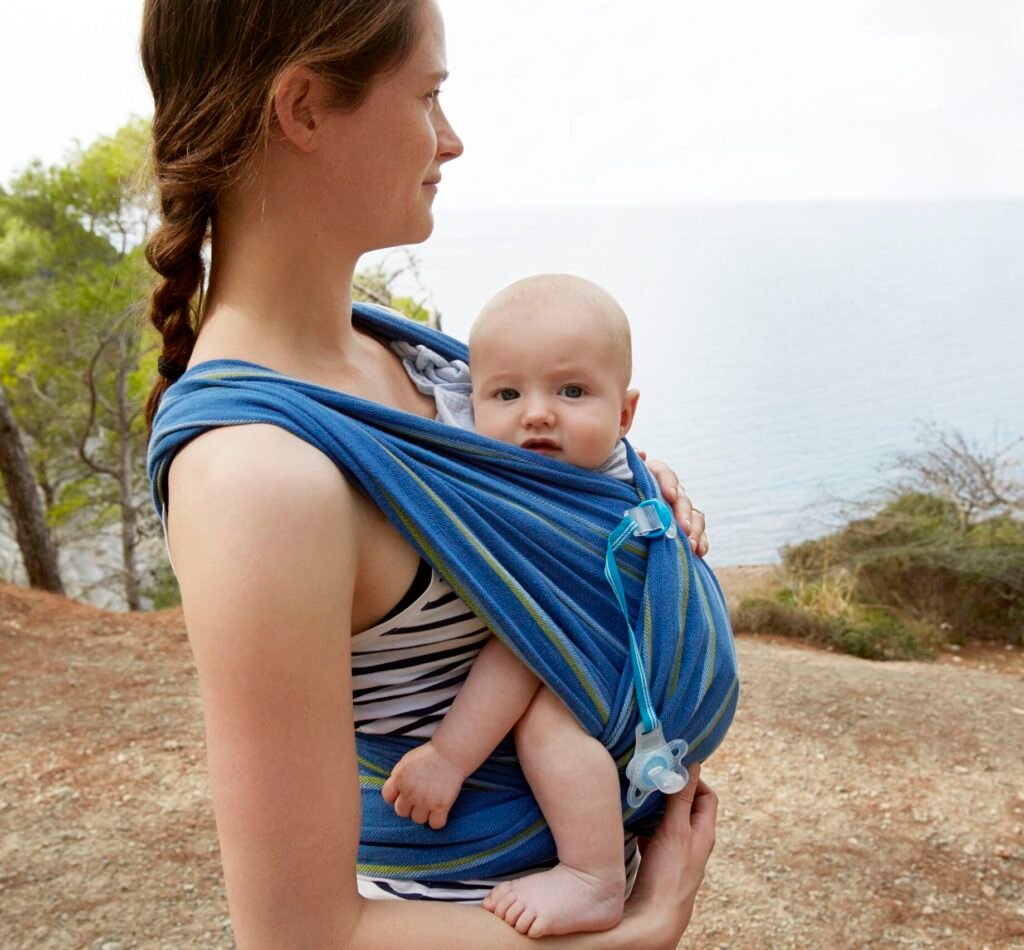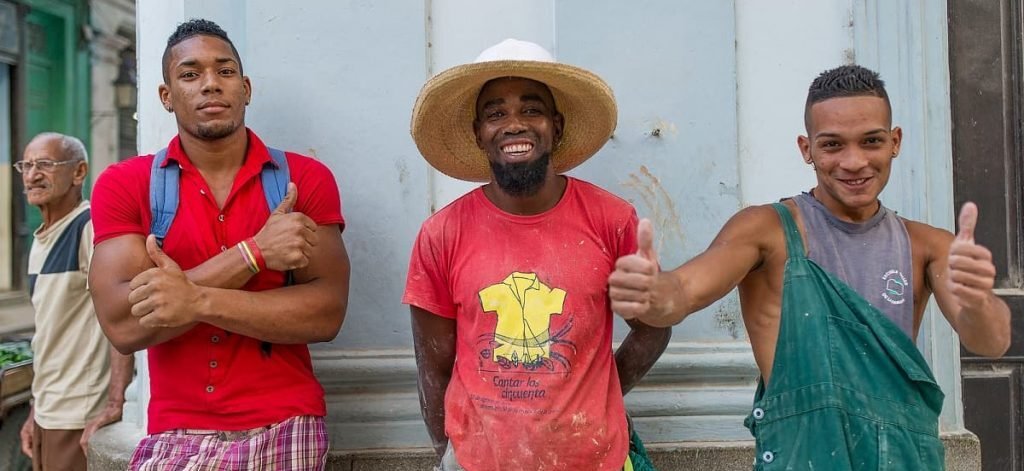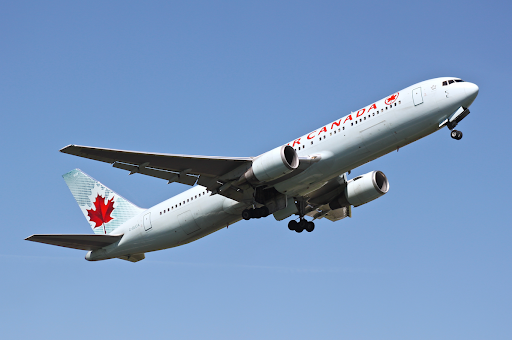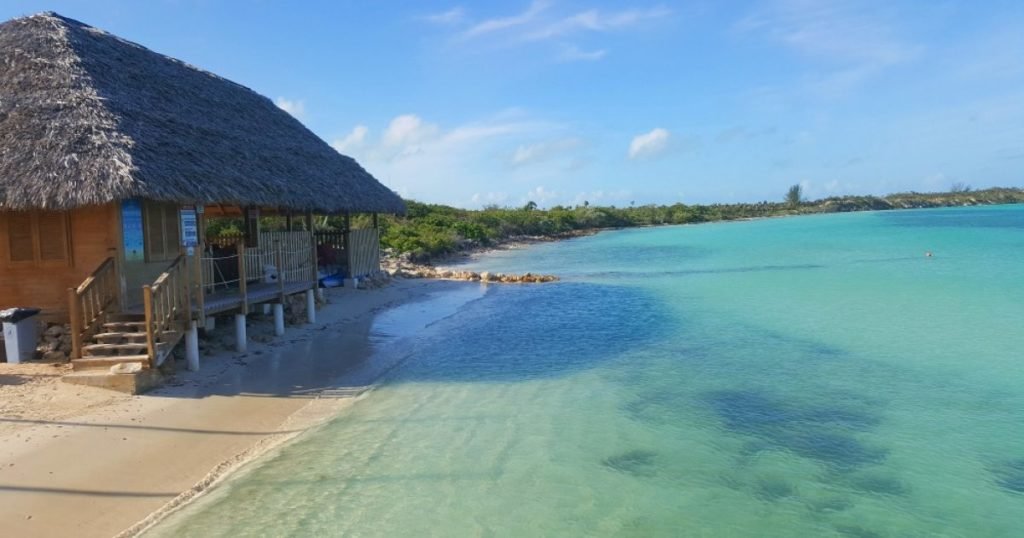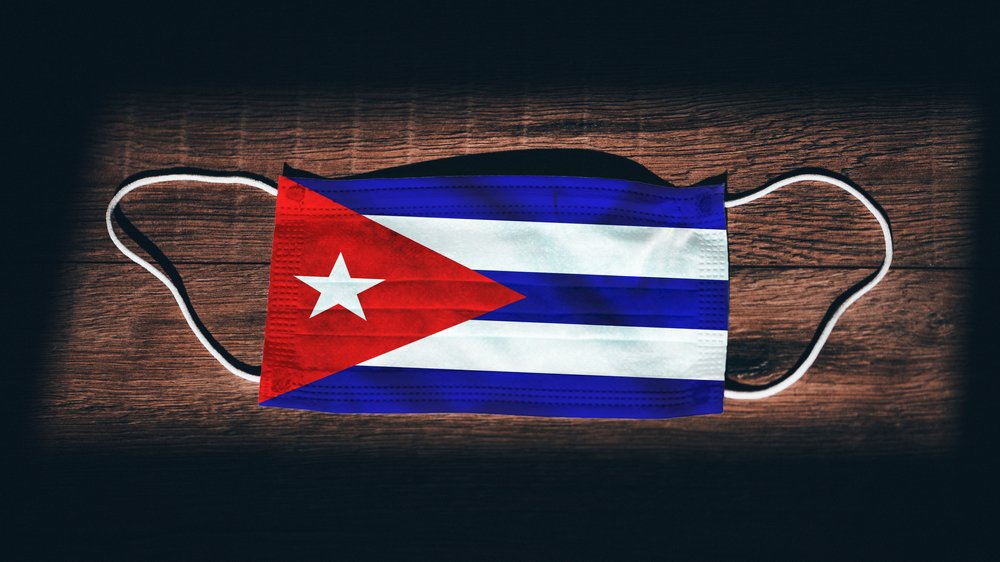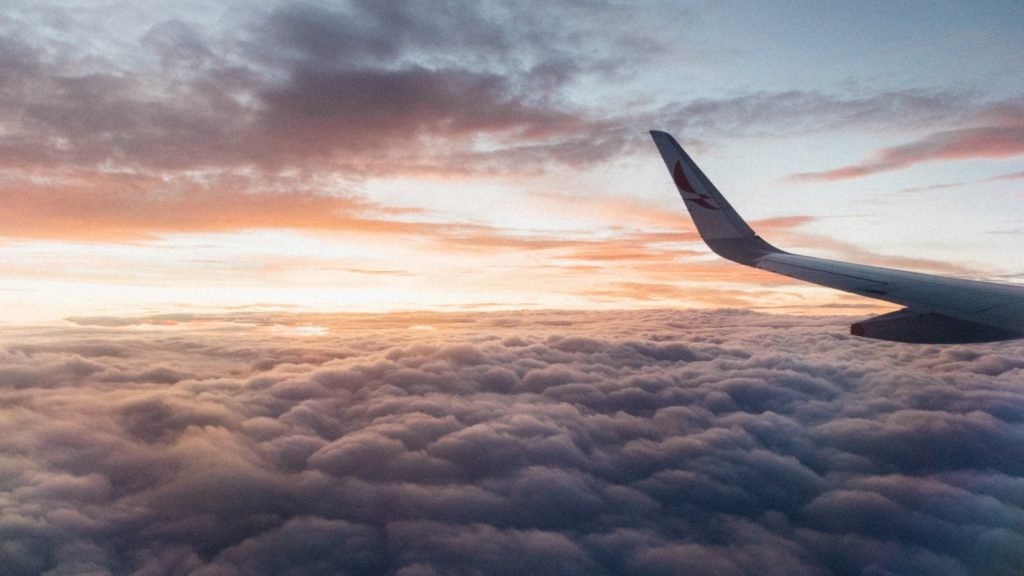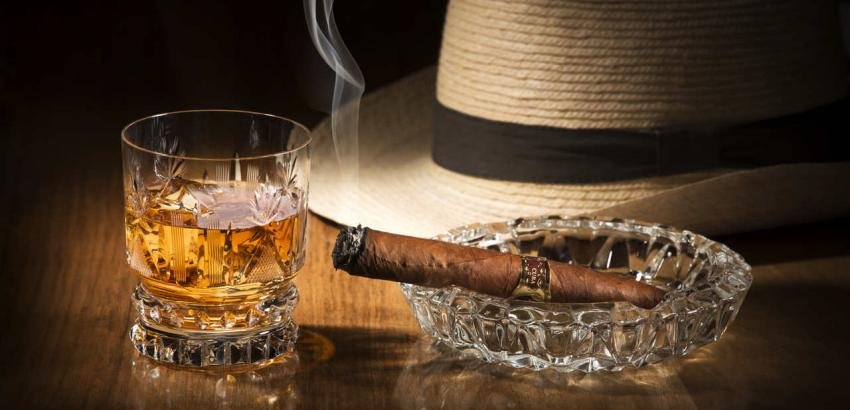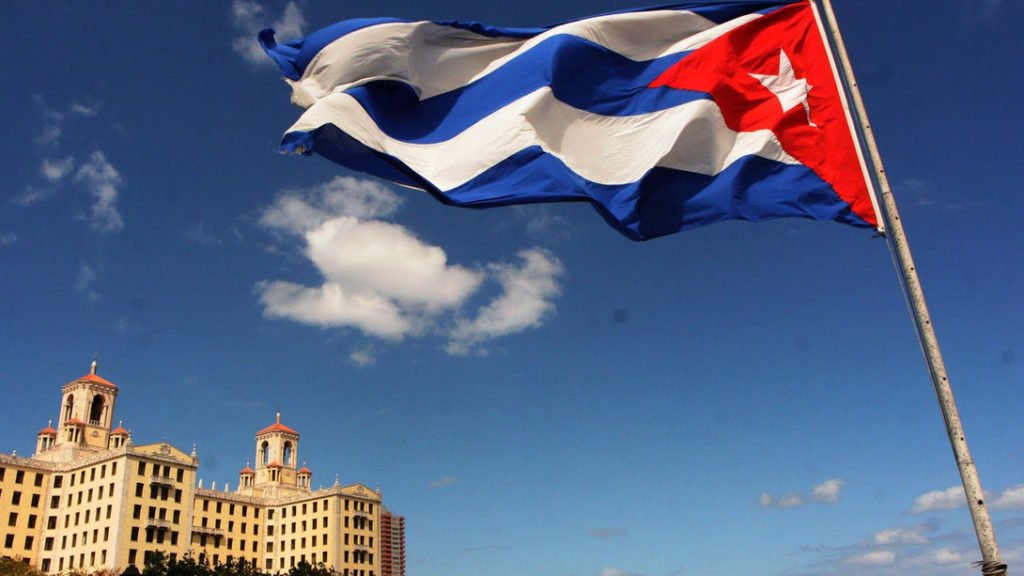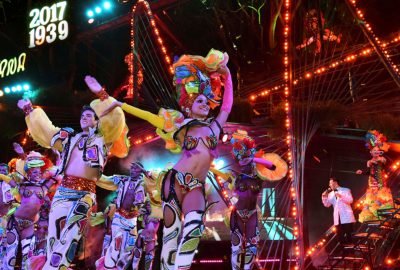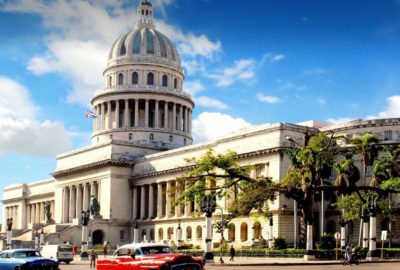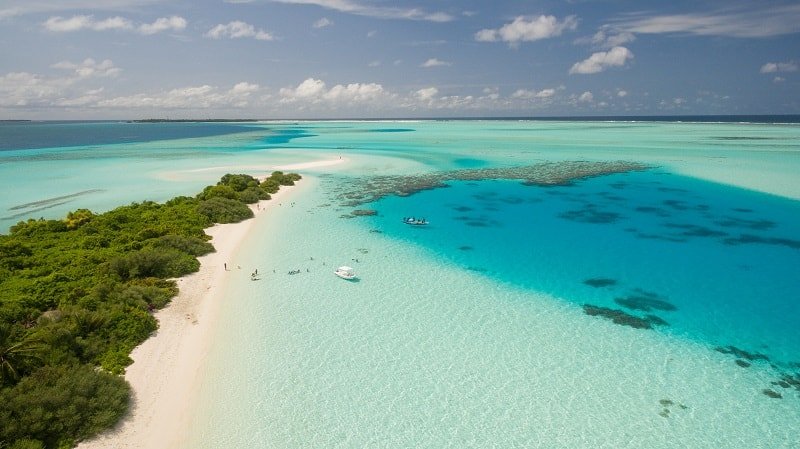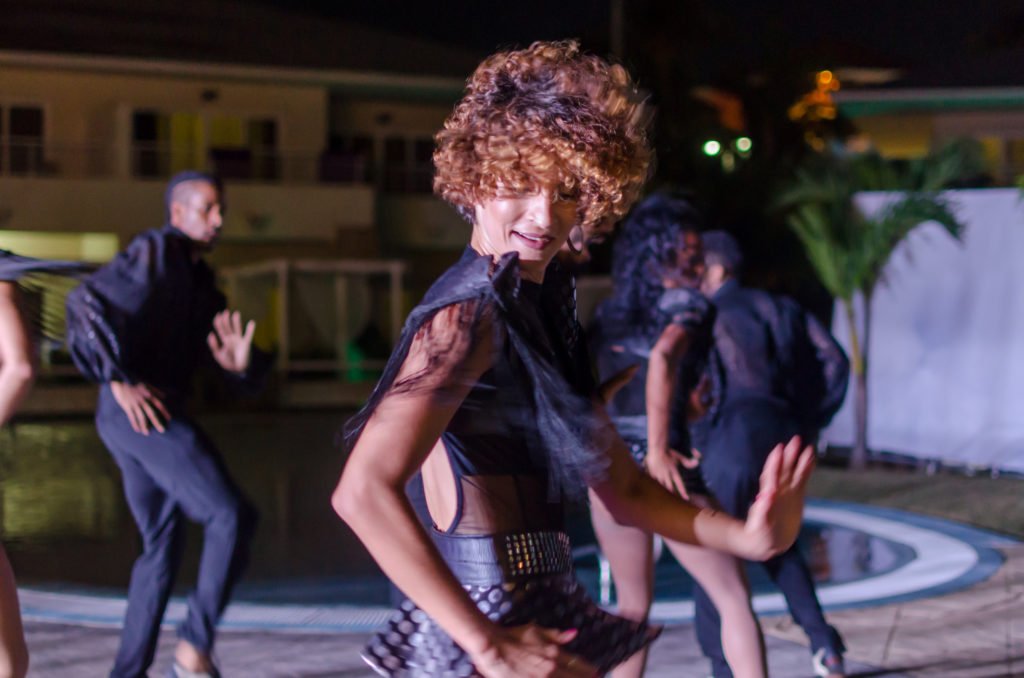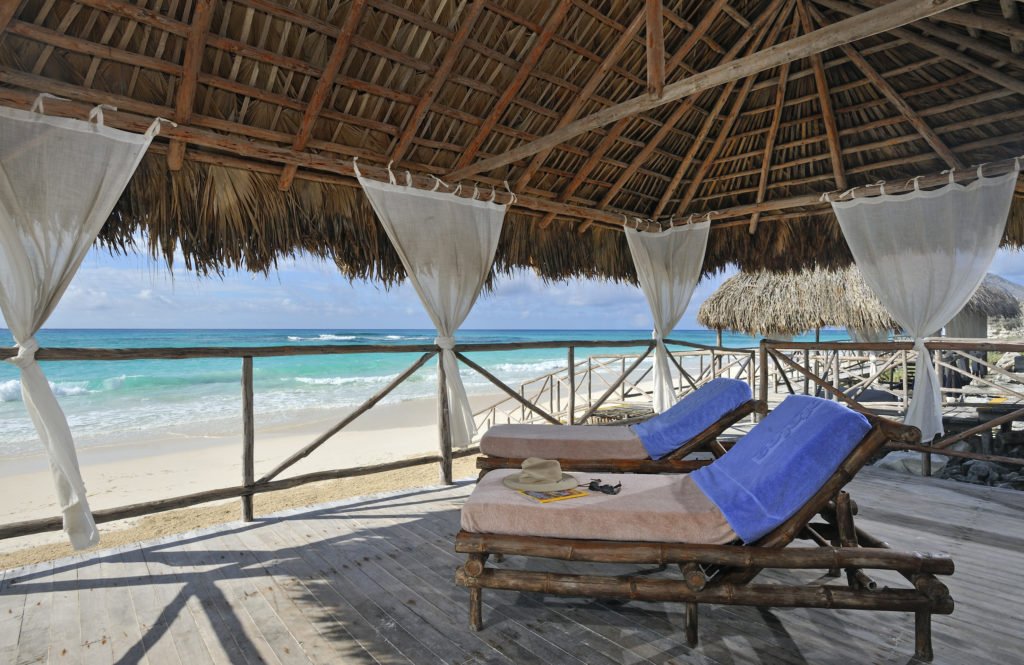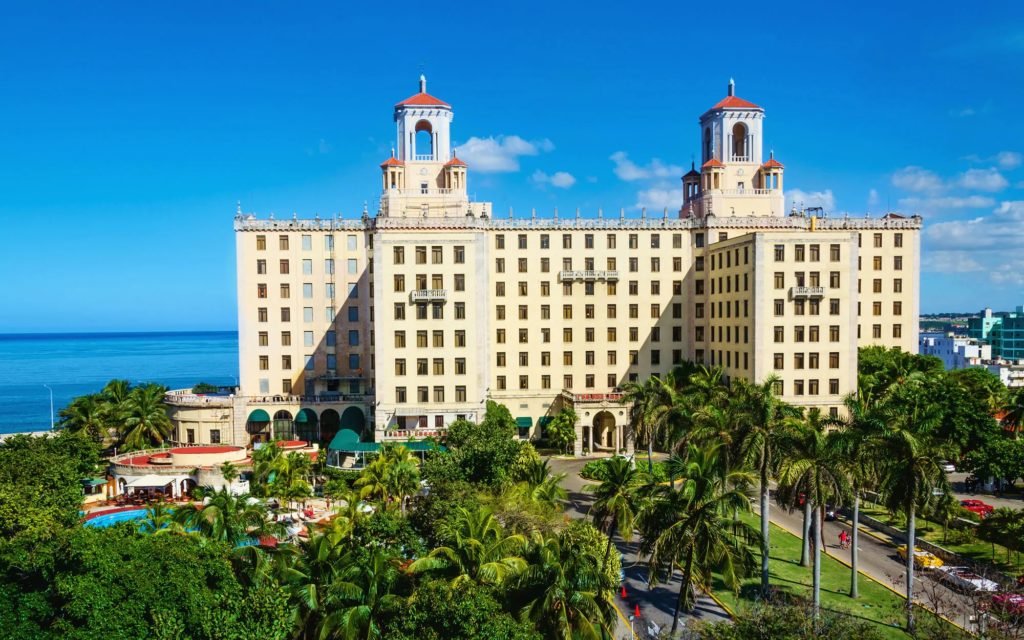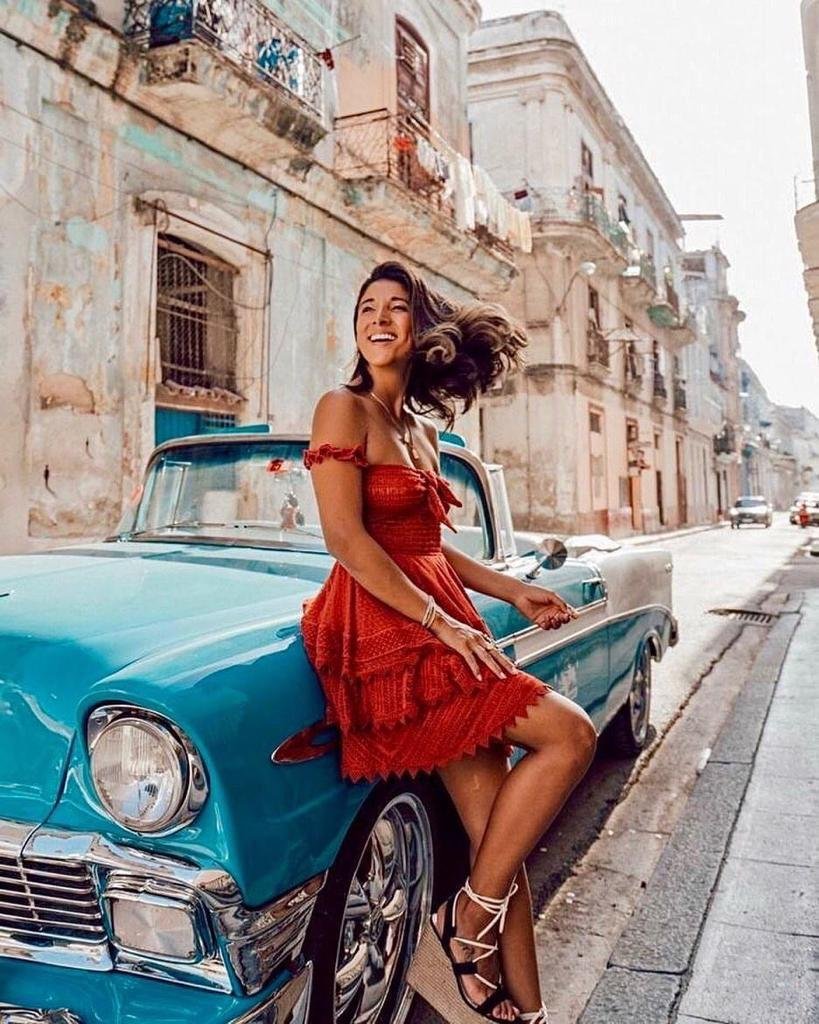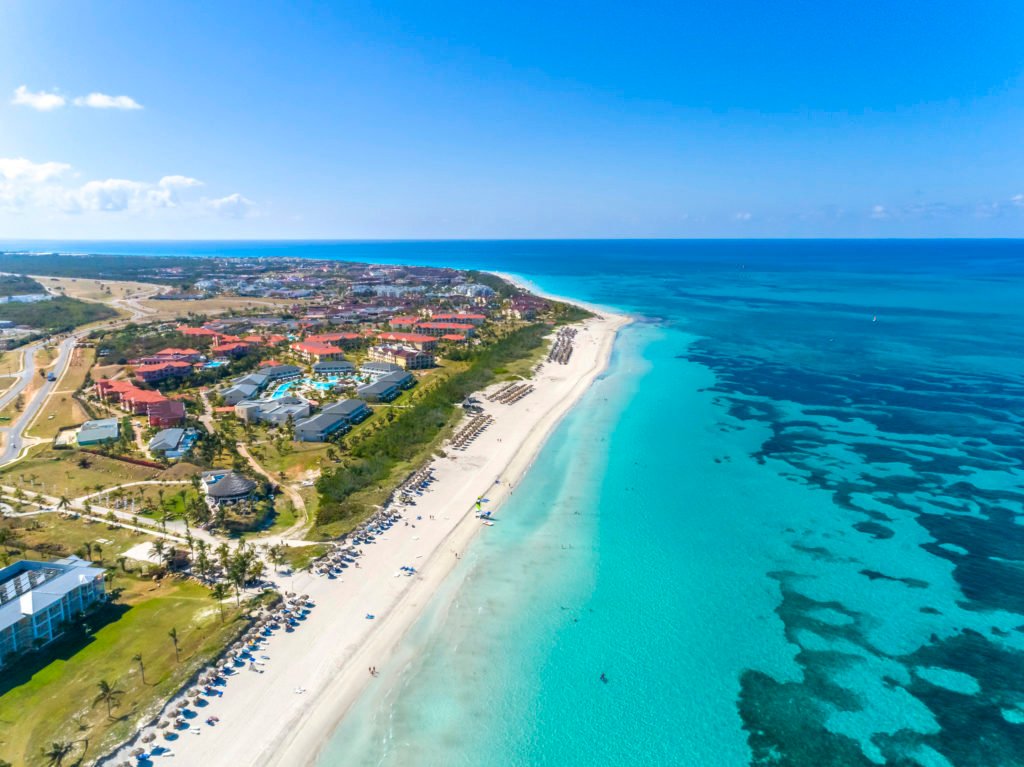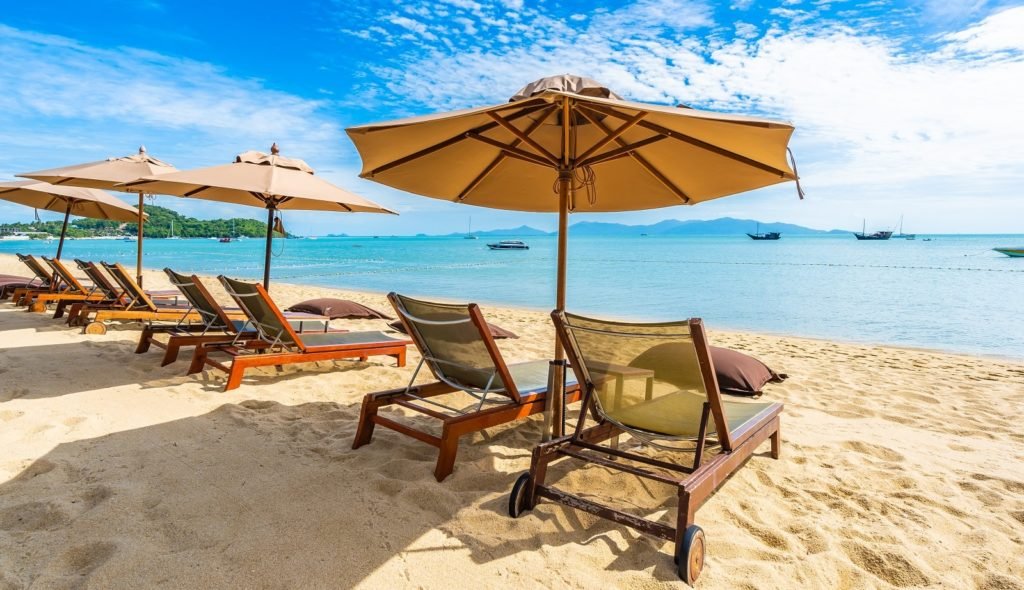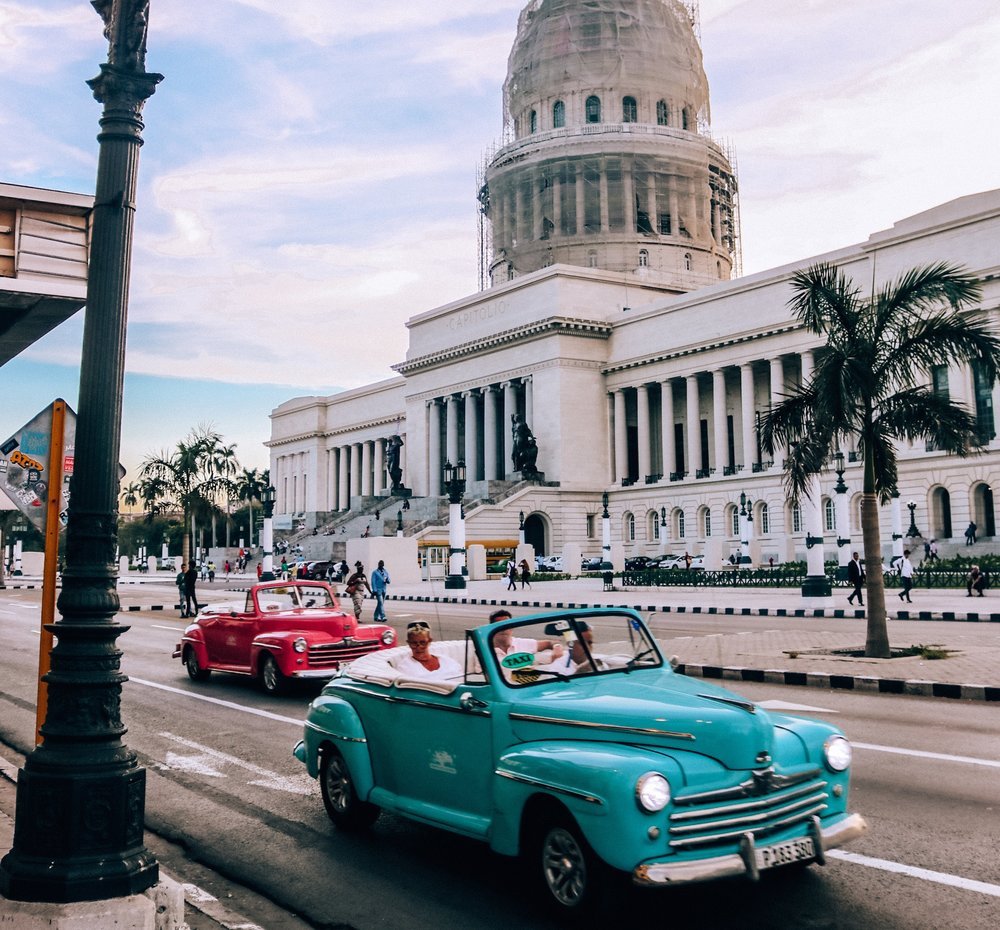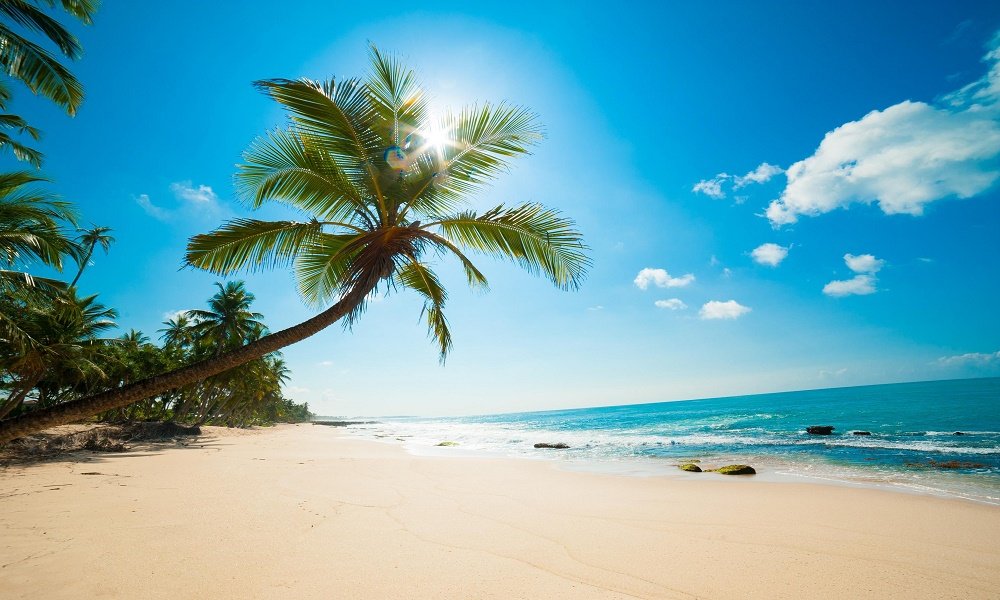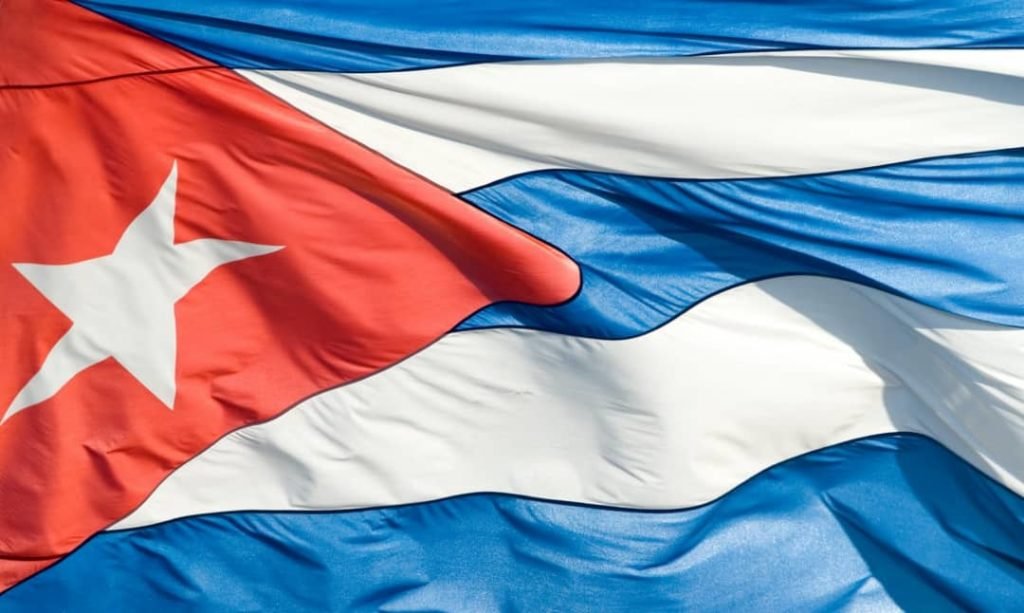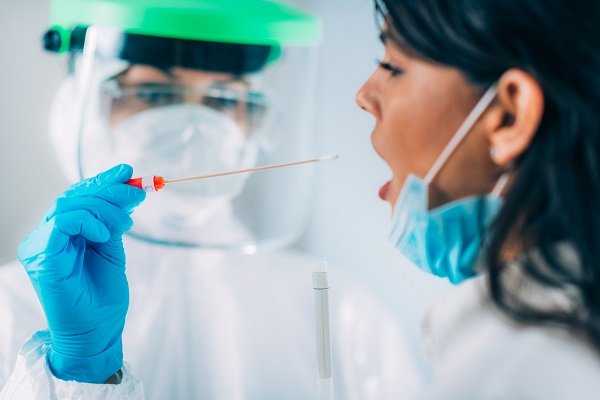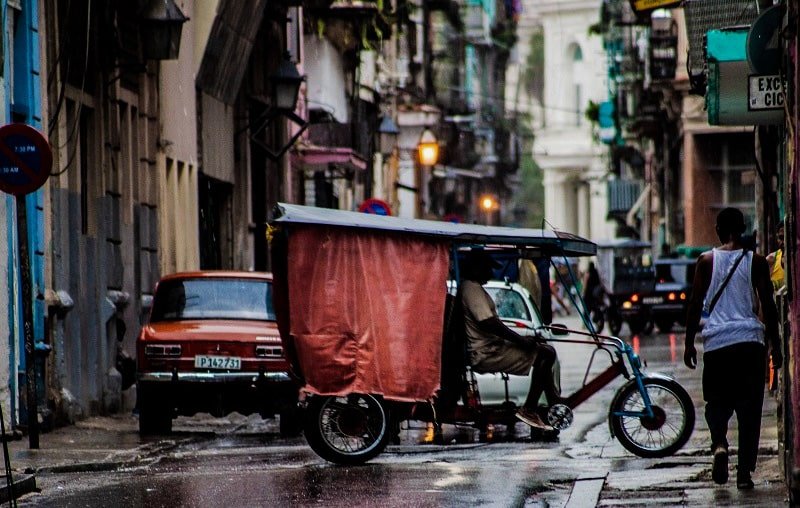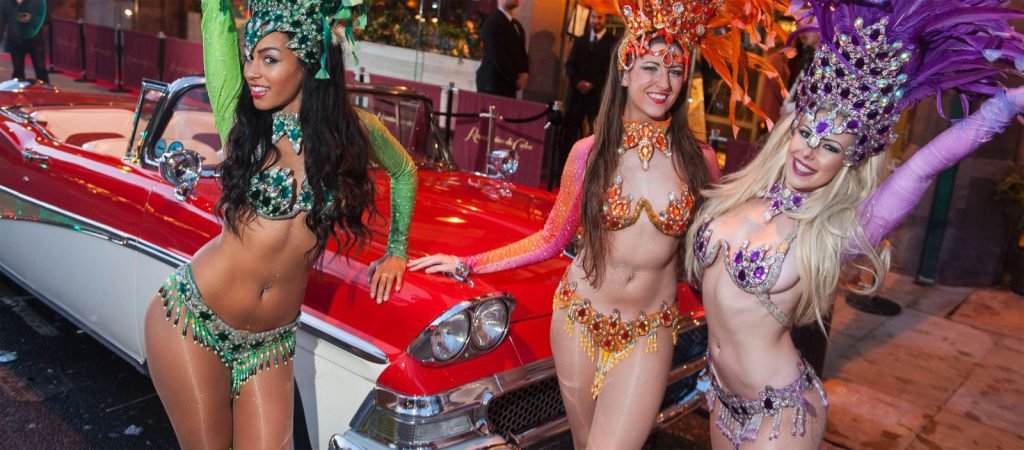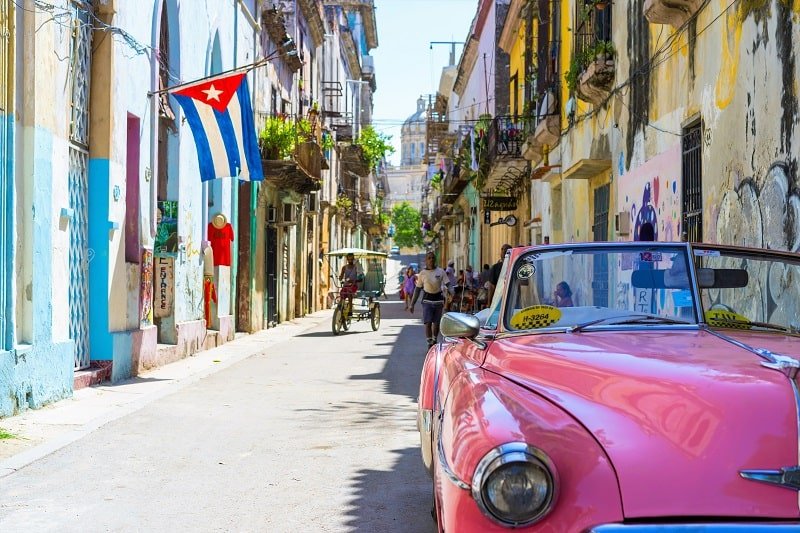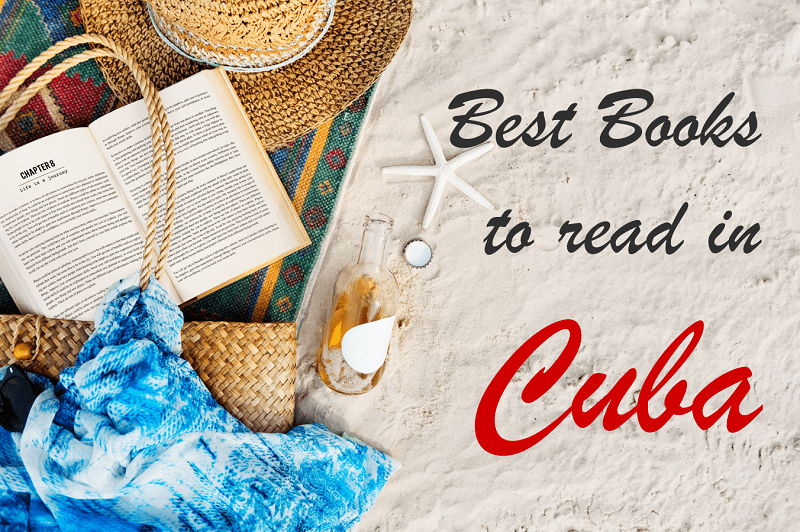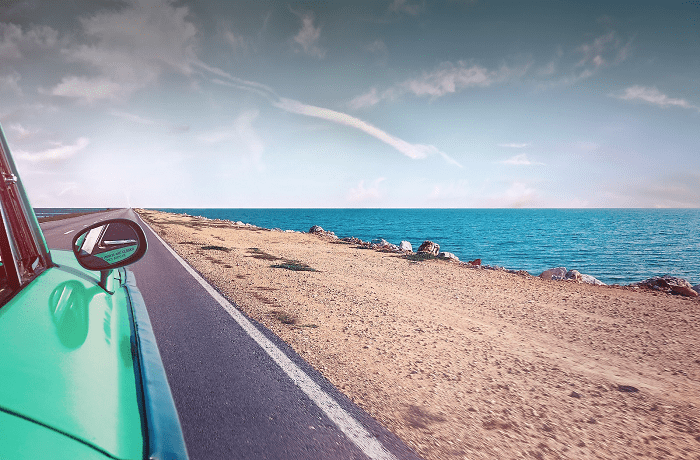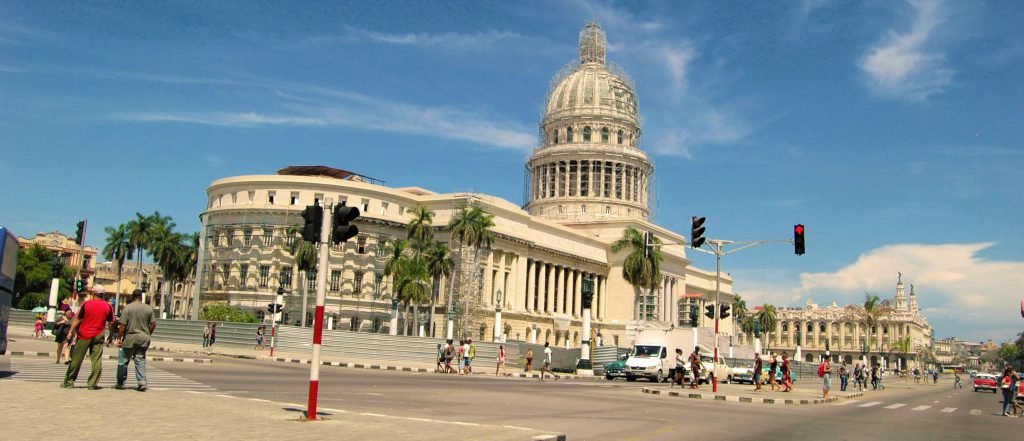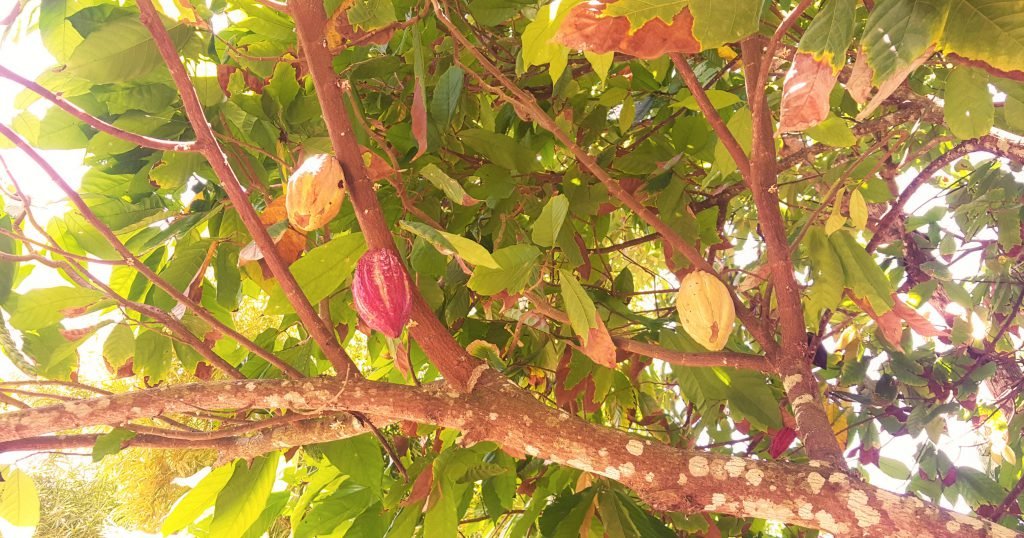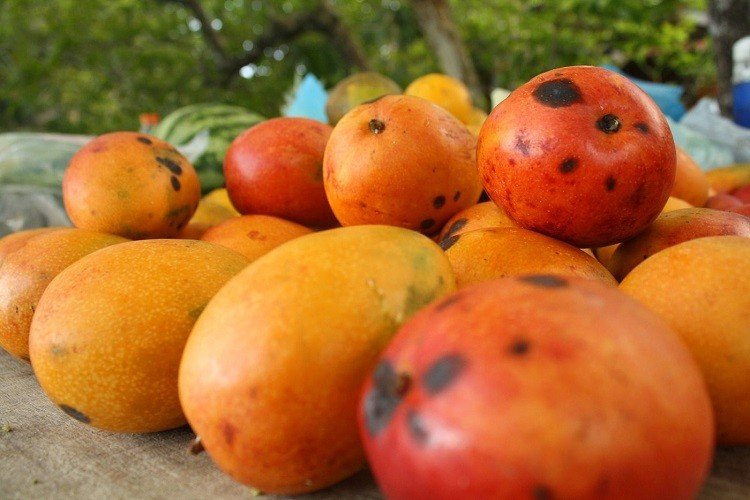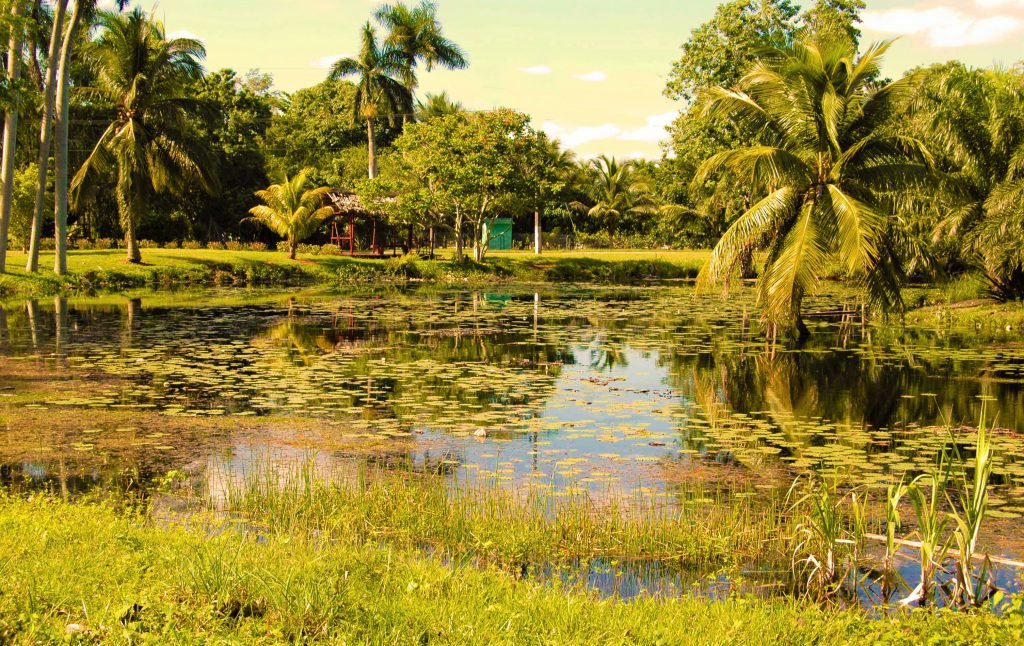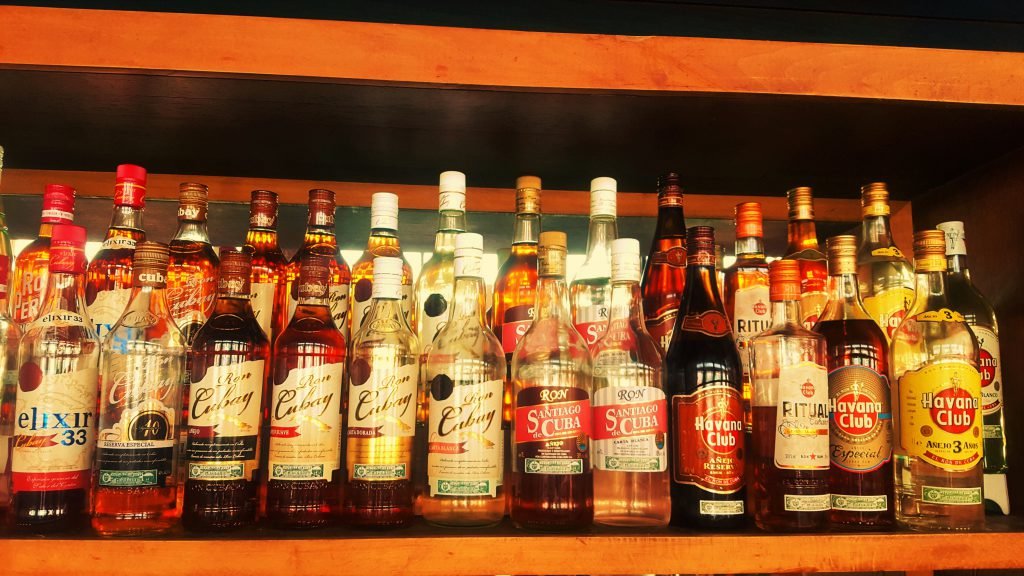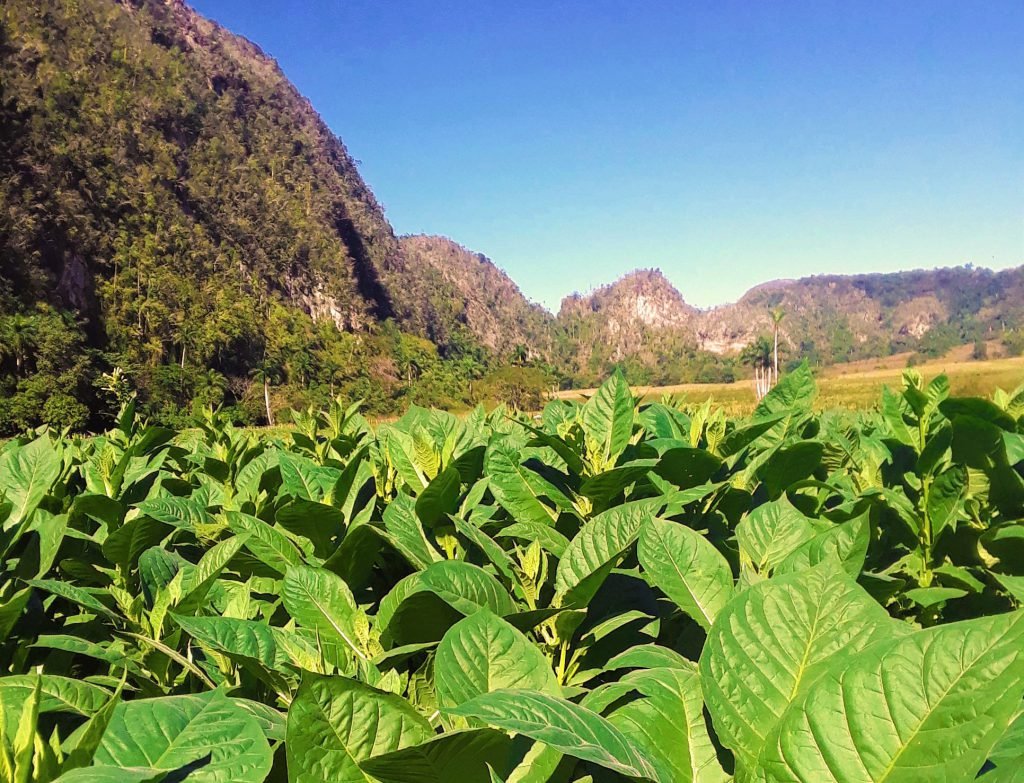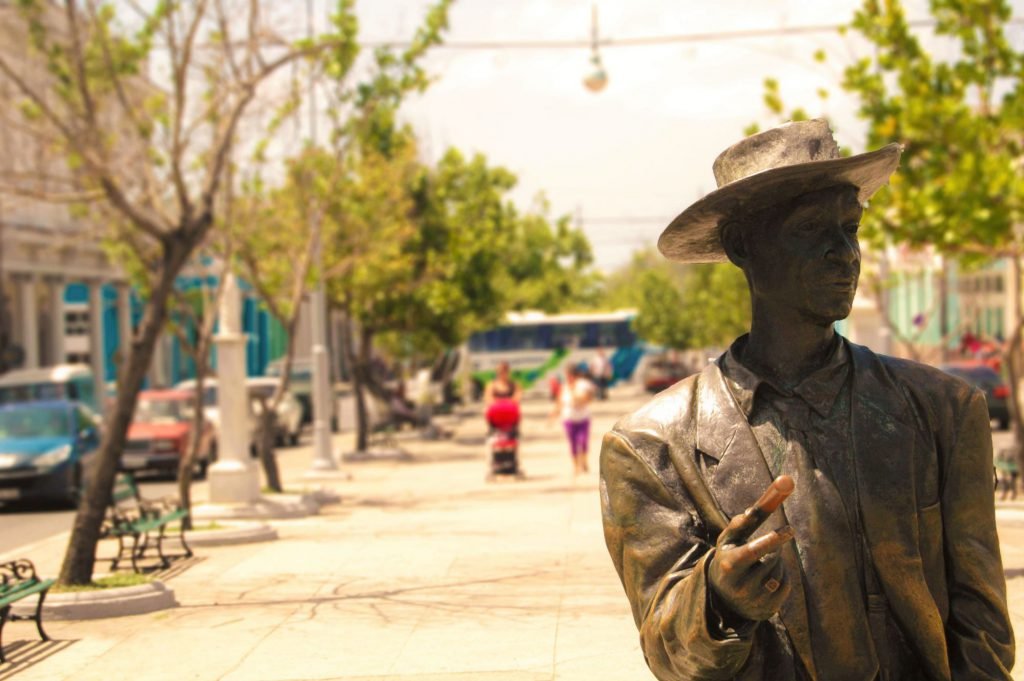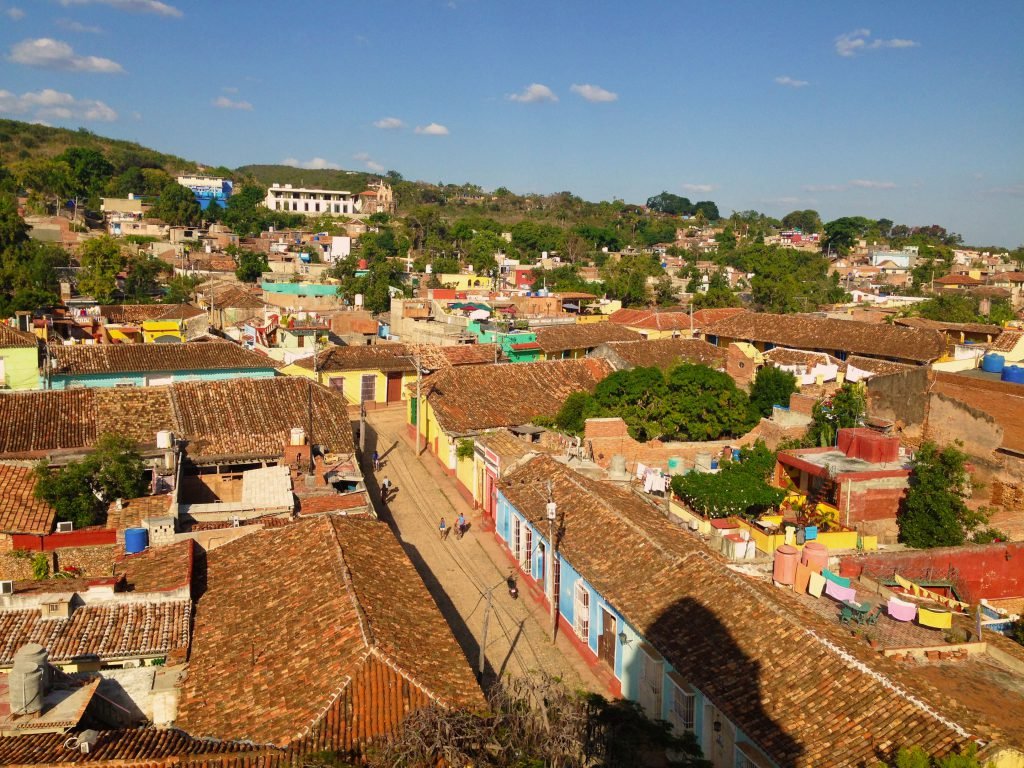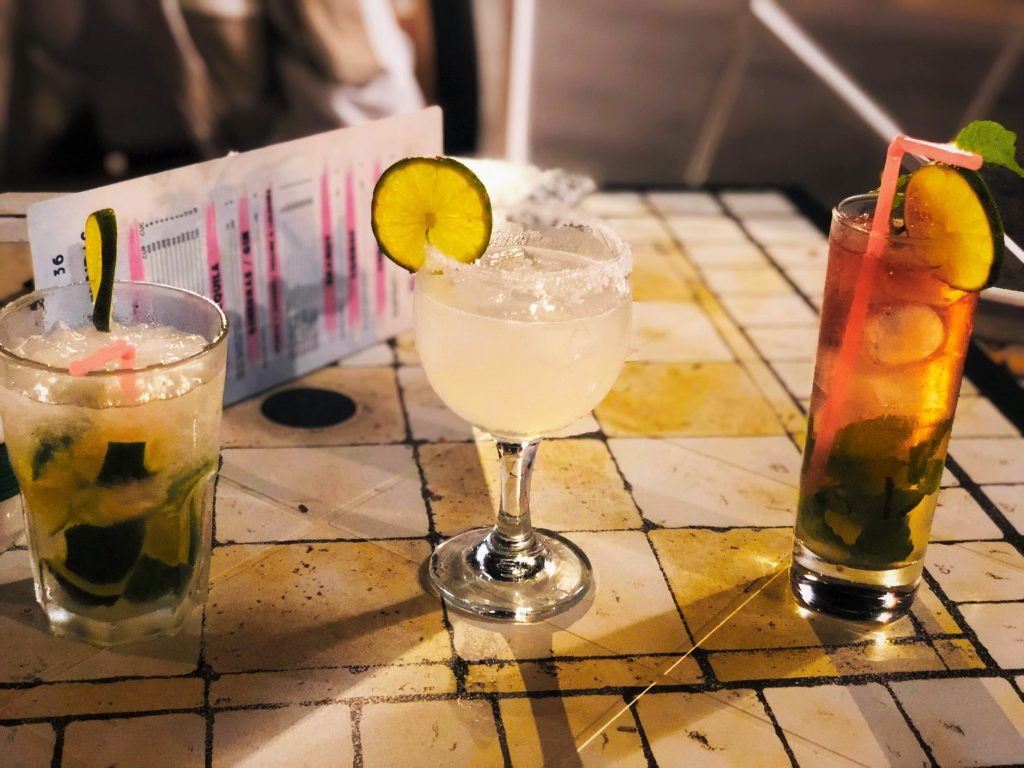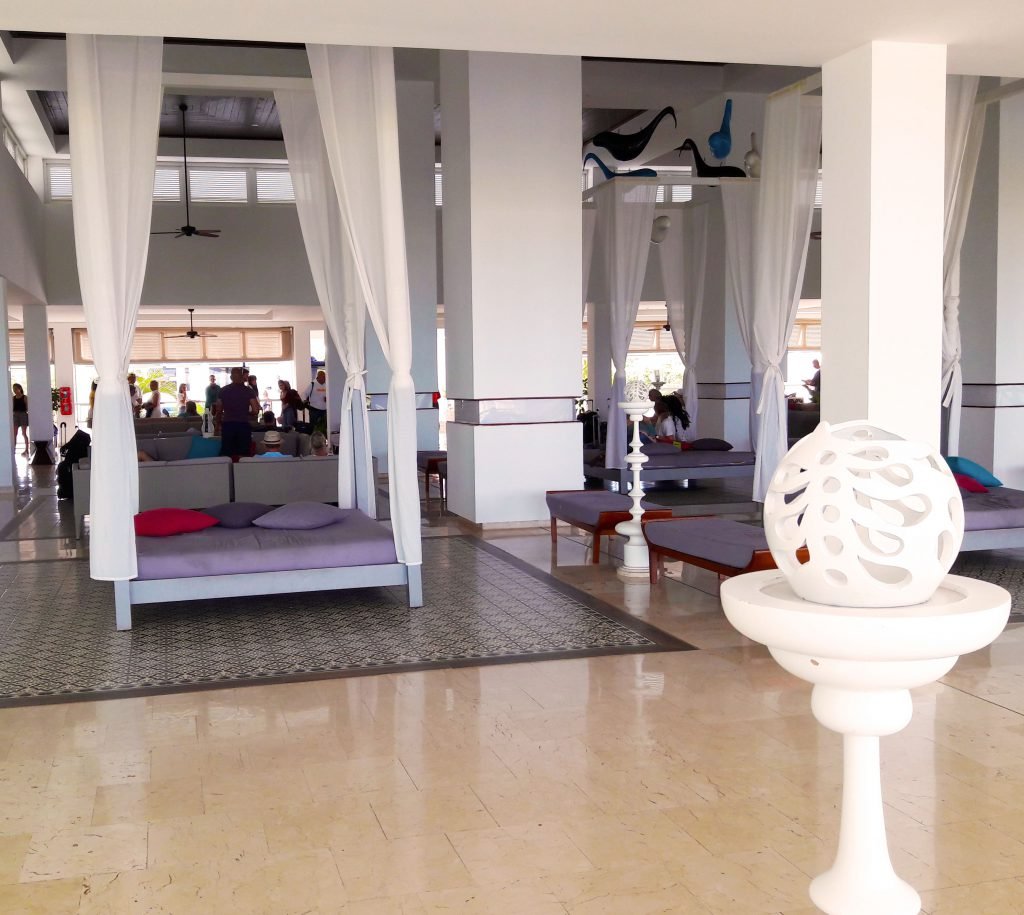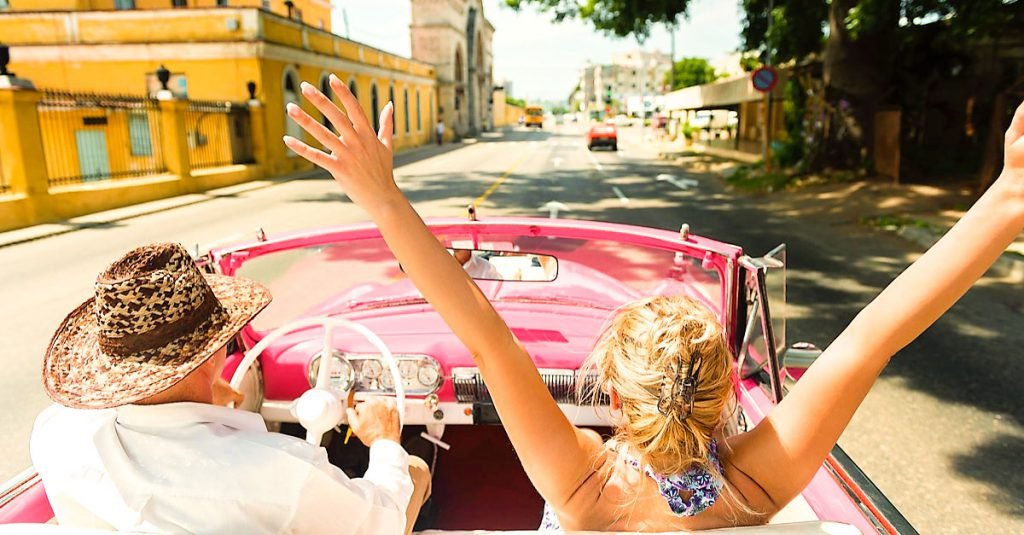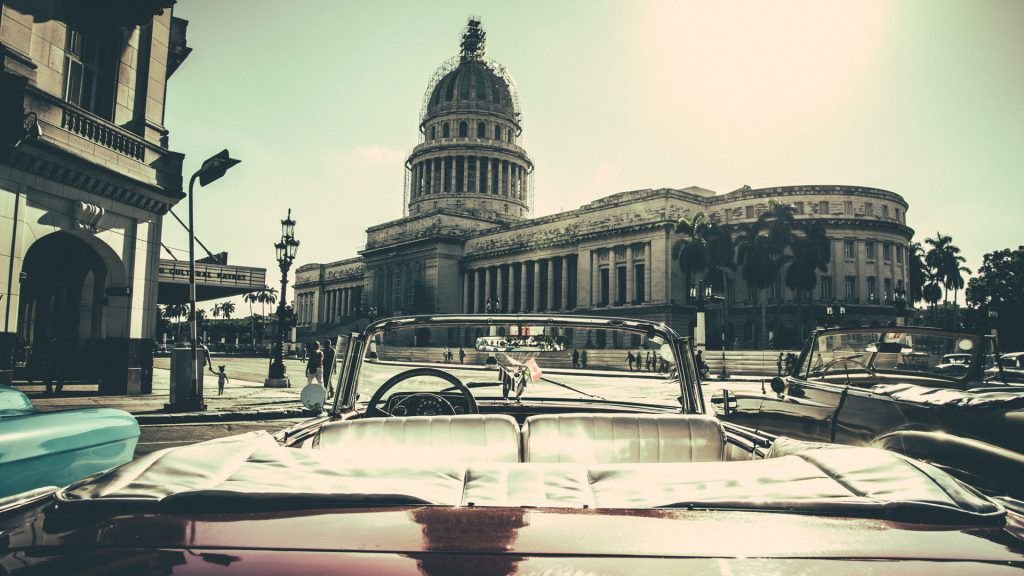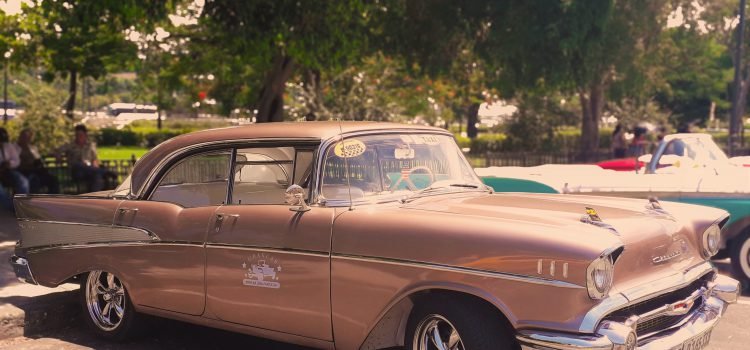Cuban Art Factory, a space where the art and creativity of the island prevail
Throughout the 20th century numerous factories arose in the Cuban capital, some of which are now in disuse.
The characteristics of its facilities (large-sized buildings, spacious premises and high-quality construction) have made them interesting assets for various reconversion purposes.
There are many elements, goods and buildings of industrial origin located in the urban fabric of Havana that have a high heritage value.
Such is the case that concerns us, the old Vedado Power Plant, later the El Cocinero oil refining factory and currently the Cuban Art Factory.
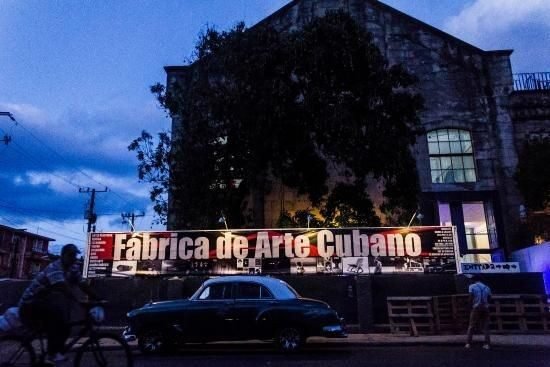
This building has urban, architectural and environmental values that make it a true exponent of the industrial heritage of the city. In addition, its history is inextricably linked to that of the El Carmelo neighborhood.
What is the Cuban Art Factory?
Cuban Art Factory (FAC) also known as The House of Art and Cuban Artists is a cultural project created by the renowned Cuban musician X Alfonso since February 13, 2014, it has its permanent enclave in the building that corresponded to a warehouse in the Vedado neighborhood of the capital, located on Calle 26 between 11 and 13.
Project motivations
The driving force of this artistic project is the need to rescue, promote and support works from all branches of art, as well as to promote the exchange and direct rapprochement between the public and the creator on a mass level, where multiple artistic manifestations such as music come together. , photography, dance, theater, plastic arts and industrial design, among other specialties.
Defined by X Alfonso himself as a Vanguard Contemporary Cultural movement.
Factory structure
The space of the Cuban Art Factory is structured around four naves, dedicated to various disciplines and artistic manifestations.
The first nave is dedicated to the field of plastic arts and design, as well as fashion, architecture and music.
The San Alejandro Academy of Plastic Arts participates in the organization of periodic exhibitions for the exchange of experiences among its students, as well as in workshops and exhibitions in which the latest national and international trends in the field of design and expression are exhibited. plastic.
The second nave is oriented towards photography and video-art, and it houses the Photography Gallery, a space from which avant-garde initiatives of an interdisciplinary nature are promoted.
The third nave includes dance, cinema, theater and classical music, also housing the digital library. It has an audiovisual projection room, in which fiction films, documentaries, short films and animations are shown.
The fourth nave is entirely dedicated to musical concerts, one of the events that form the backbone of the project.
This space has three rooms: the first for small-format events, another exclusively for classical music, and the one known as Nave Azul, specifically built for the interpretation, listening and expression of the Cuban music scene.
The Cuban Art Factory is a great tourist attraction and is visited by hundreds of Cubans and foreigners who come to enjoy the project.
The Plaza de Armas, the heart of colonial history in Cuba.
The importance of squares comes from ancient times where cities developed around a community center, where meetings and activities of daily life took place.
The square is the scene of public life. In the Havana city, the Plaza de Armas constitutes the generating point of the city of Havana (1519). Its layout evokes that of the fortified squares of medieval Europe.
In its perimeter were the headquarters of the civil and military authorities in colonial times, and the parish church of the City.
History
At the end of the 16th century it acquired its definitive form, between La Real Fuerza and the old Parroquial Mayor. After the construction of the Royal Force, it was used for military exercises and was named Plaza de Armas, with which it lost its public character.
It was, from its inception, a meeting place for the inhabitants of the primitive town and its fundamental institutions surrounded it.
In the 18th century, after a period of decline, it was remodeled when the Major Parish Church was demolished and, in 1771, the construction of the Palacio de Correos y Intendencia, better known as “Palacio del Segundo Cabo”, began, and in 1776, on the north side of the Plaza, the Palace of the General Captains, the most important public buildings of the time.
Attractions
In the Plaza de Armas you can see the El Templete monumental complex, built in 1828 on the site where the first mass and the first town hall were supposed to have been held in Havana in 1519.
Since 1955 the statue of the Father of the Nation Carlos Manuel de Céspedes, the work of the Cuban artist Sergio López Mesa, occupies the pedestal where that of the Spanish monarch Fernando VII was located and gives the square its name.
In the square there are other renowned monumental buildings, such as the Castillo de la Real Fuerza, which houses the Museum of Navigation; or the Palacio del Segundo Cabo, with a beautiful Spanish Andalusian patio.

Undoubtedly, the Plaza de Armas is a popular place to visit for tourists who arrive on the island and are given the opportunity to walk through the open square, of regular dimensions, shaded by trees and with stone benches, small fountains and a marble sculpture in its center.
Cuban expressions, a way of understanding our people.
Cuba is an exceptional and different country for many reasons and you realize it from the first foot you put on the island until the last.
A spectacular rhythm, a magnificent architecture, an incomparable gastronomy, and a friendly people dedicated to tourists accustomed to expressing themselves without fear of being prejudged.
One of the most common elements, without a doubt of Cubans, are their expressions. They are many and varied and, no matter how well you master the Spanish language, it will be impossible for you to deduce them if they do not explain them to you in advance.
This little journey through the Cuban imaginary is nothing more than a small explanation of the vast diversity of vocabulary that Cuba possesses, an island that immerses you in another era, where the joy of its people is contagious and where you can enjoy wonderful beaches. , nature and an interesting history.
Here we present 26 of the most famous expressions of Cuba and that, if you visit the island, you will hear daily.

- Asere ¿Qué boolá?: It is a greeting like saying What’s up friend? or how are you?
- Ando a la mailó: Synonym of being relaxed, without worries. It also means to be naked.
- Coger botella: ask for a ride.
- Irse pa’l yuma: At first its meaning could be to travel to the US, but lately it has been used as a synonym for traveling abroad, whatever the country.
- Las tengo a pululu: When you hear this phrase it refers to the man who shows joy about the good state of “mood” of women towards him.
- Completo Camagüey: It refers to the fact that everything has finished, or the end of a task.
- Meter la cuchareta: interfere in some matter or conversation in which you should not.
- Ser un barco: leave everything for the last minute.
- Coger un diez: it means taking a break at work to come back to it later.
- Estás detrás del palo: It is used when someone is not aware of the latest news or does not know anything.
- Tener jeva: this expression is used when you start a relationship with a woman, that is, you have a girlfriend.
- ¡Ño!: It is used to show surprise as well as anger or resignation.
- Se quedó como la novia del pacheco…vestía y sin ir a la fiesta: Surely they have left you standing at some point. Well, in Cuba, if that happens, they use this funny expression.
- Caminar con los codos: It means being a stingy person.
- Tiene más rollo que película: It refers to people who talk a lot, but say very little.
- Amaneció con el moño virao: Not everyone has a good awakening and for the Cuban people, those who do not wake up on the right foot, ¨amaneció con el moño virao¨ .
- Deja la muela: stop talking so much.
- Ser un quema’o: refers to that person who knows a lot about a subject and at the same time likes to talk about it.
- Chao pescao: means to say goodbye or see you later.
- Brother, consorte: when two people know each other very well, they refer to each other in this way.
- Almendrones: in reference to the shape of American cars that were fashionable in the 40s and 50s; so taking an almendrón is equivalent to taking a taxi. Also, cars are called “cars”, buses “guaguas” and their drivers “guagüero”.
- Dollar, chavito, pasta, plata, fula: refers to money either in CUP (the Cuban currency), such as USD, euro and other currencies.
- Tunturuntú: means disappear, go, get out of my sight.
- Estás en llama: it means to be an ugly person, in relation to appearance.
- Tremenda caña o mango: Here it is the opposite of the above, because it means being a beautiful, graceful person.
- Eso es más viejo que el Morro: Cubans use it when they refer to the degree of antiquity of things.
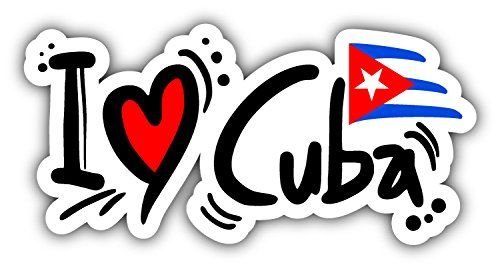
And now yes, we come to the end! This is just a little bit of the large number of popular Cuban phrases that we hear daily on the island. I hope you laughed at these funny Cuban sayings.
10 Experiences When Interacting With The Cuban People
10 Experiences When Interacting With The Cuban People
It is common when you are planning a trip to have some expectations about climate, nature, architecture and culture of the new places that we are going to visit during the holidays. For years it has been a trend that interaction with locals is prioritized as one of the main added values of certain destinations, among which is, without a doubt, Cuba. So … what exactly should we expect from people to people interaction. Below we analyze 10 main aspects that you will surely notice when interacting with the population of the island.
1. Always a smile
Cubans are gentle, friendly and hospitable people. It is part of the culture and formal education in the country to welcome visitors with kindness, to make them feel at home. This is one of the main characteristics that stand out the moment you arrive in Cuba.
2. Cubans are overprotective
After five minutes of conversation with any Cuban you automatically become a friend of the house, after knowing you for two days you are a family member. This means that, even without asking, you will be adviced about the street you should or should not walk on, what to eat, where to do it and where to go. This can be interpreted as meddling, but don’t be alarmed, they are just looking out for you.
|
|
5. No conversation lasts as long as expected
It is proven, we are very sociable and extremely talkative; we have opinions about everything and we are not afraid to let you know. Cubans are very outgoing, so many times what starts out as a simple greeting with a stranger ends up being a conversation lasting an hour and a half, which can range from global warming to health advice.
6. Highly qualified people
The fact that education is free in Cuba has given many the opportunity to study university degrees. After the 90s crisis and the opening of the island to international tourism, many professionals stopped practicing and went to work in tourist facilities . For this reason perfectly your bar tender is an engineer and your taxi driver a doctor.
7. Confusion
The objective of interacting with the people is to know how their day to day works. The moment you start to obtain information about how most Cubans live and how things work on the island, you will realize the particularity of the Cuban reality; so don’t be surprised if you end up having a lot more questions, just do not be judgmental, enjoy your stay and try to be positive.
8. Scarcity
In Cuba there are many shortcomings, so do not take anything for granted, as soon as you go out you will realize that we are simple people and that we live with the basics. Of course, if you are planning your vacation on the island, think carefully about what you consider necessary because when you go to the local shops you may miss more than one thing. To be more prepared, we recommend reading our article ¨24 Cuba Travel Tips You Should Know Before Going¨.
9. Technological Detox
When you arrive on the island, you will immediately notice the low levels of technology with which we Cubans live, although lately there are many who have mobile phones and internet connection, do not expect it to be up to what you are used to. If you need internet connection, probably will be better for you to use the prepaid cards for the Wi-Fi connection, or to buy a temporary SIM card for tourists.
10. Cuba is a safe destination
During your stay you are going to be able to go out almost at any time without taking great risks. Here it is not common for violent acts or bloody crimes to exist. In fact, one of the most widespread criteria among those who have visited us is that Cuba is a safe destination; Although it is never good to be overconfident, because bad people exist anywhere and you cannot go around without taking basic precautions.
Although many will tell you that the best way to check if all this is true will be by staying in a Hostel or a Casa Particular, you do not have to give up the comforts of a hotel. You will always have the alternative of go out to discover the surroundings or to do some tours. Of course, if you want to say that you have known Cuba, we do not recommend you to stay drinking Cuban Coctails in the pool or sunbathing on the beach. To know Cuba you have to know its people. |
CUBA: THE DREAMED DESTINATION FOR CIGAR LOVERS
Definitely habano is the best cigar in the world. “Habano” is a protected designation of origin, concerning only to cigars produced in Cuba using 100% leaves of tobacco grown in Cuba.
A Cuban “puro” not only conveys the sweetness of Caribbean soil and climate, but it also tells the history of one of Cuba’s most authentic centuries-old traditions: the cigars hand-twisting. Let’s learn a little more about habanos and their magic.
Why Cuban cigars are so special?
The climatic conditions and the chemical properties of the soil, gives Cuban cigar a sweet flavor, with a rather high sugar content and relatively low proportion of nicotine. Moreover, the cigar shaping is carefully made by hand, providing it with a seal of authenticity that makes habanos the best cigars in the world.
Tobacco (Nicotiana tabacum) is a plant autochthonous from the Western Hemisphere, and it arrived in Cuba through the Antilles, approximately 4,000 to 5,000 years ago. Upon the arrival of the Spanish colonizers to Cuba, the tobacco plant was one of the main crops on the Island.
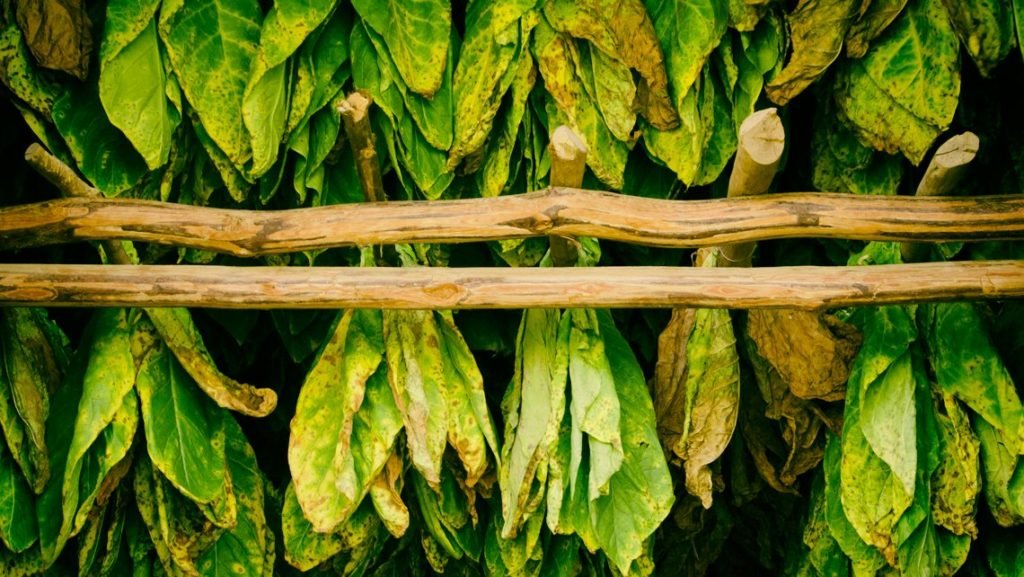
The cultivation of tobacco has several stages: the process begins by planting the seeds in seedbeds under optimal conditions. They remain there for several weeks, and around 45 to 80 days after that, the harvest of tobacco leaves can be started.
The harvested leaves are then transferred to the drying houses. After removing of their central vein, the leaves are classified as either dry, flown or light. They are subsequently fermented to release harmful chemicals, such as ammonia, and are aged at the manufacturer’s discretion. Finally, the cured and fermented tobacco leaves are taken to the “torcedor”, which is the person who carefully select each leaf and twist them carefully for shaping the cigar. Then, cigars are submitted to a second aging period, re-classified, and, finally, they are packed in cedar boxes.
Habanos are classified according to their shape in different types of “vitolas”. It can be Large, which are ideal for smoking softly and for a long time, Thick or Robust, which burn in a more slowly way and leave the aroma and flavor of the cigar for a longer time on the palate, and Lighters, which are small and thin cigars that smoke relatively fast.

Today, habano is one of the most exclusive Cuban products. It is manufactured from tobacco mainly cultivated in Pinar del Río province, although the best known cigar factories are located in Havana. Cigar factories are a typical tourist attraction in Havana, and many travelers enjoy visiting them to watch the manual tobacco leaves twisting process, and to buy exclusive custom cigars.
The five best Cuban Cigar brands
Several brands of Cuban cigars that, because of their exceptional quality, are very appreciated by habano lovers. The fave most popular brands are Cohíba, Montecristo, Partagás, Romeo y Julieta and H-Upmann.
Cohíba
The tobacco used in Cohíba cigars are from “El Corojo”, in Pinar del Río. Tobacco grown in El Corojo vegas yields soft-layer leaves of fine texture and light colors.
For producing Cohíba cigars, there is an extra process called “third fermentation”, and it is carried out along with aging. That extra fermentation process gives Cohíba its singular taste and distinguishable softness. Che Guevara, as Minister of Industry of the Republic of Cuba, was the promotor of the brand. For producing the first three prototypes in 1968, Che engaged the most promising specialists of that time.
Those three prototypes resulted in what is today known as Lanceros (large panetela), Coronas Especiales (crown) and Panetelas (cigarette). Three new series were launched in 1980s, the Classic Line with the Splendid (Churchill), the Robust (robust) and the Exquisite (panetela). A further line, 1492, came to the market in 1992, and it included five models: the 1st century (little crown), the 2nd century (petit corona), the 3rd century (crown), the 4th century (long crown) and the 5th century (lonsdale).

Montecristo
Montecristo cigars are strong cigars with a dark brown coating. The Montecristo A-Class is a 235 mm cigar that outperforms all classifications. The vitolas of this brand are classified as: Montecristo No. 1 (lonsdale), Montecristo No. 2 (figurative), Montecristo No. 3 (crown), Montecristo No. 4 (small crown), Montecristo No. 5 (coronita), Montecristo A (great Crown), Specials (great panetela), Joyitas (demi-tasse), Montecristo B (petit crown), Tubos (lonsdale), Montecristo No. 6 and Montecristo No. 7.
Montecristo brand was launched in Cuba in the thirties of the past century, although its history dates back to the nineteenth century. It was long regarded as one of the preferred brands of Cuban cigars. Montecristo is very recognized worldwide and its sales exceed those of other tobacco brands.
Partagás
Partagás is a medium-strong type of light brown color cigar, made with tobacco from Consolación del Sur municipality, in Pinar del Río. This brand was founded in 1845 by the Catalonian entrepreneur Jaime Partagás y Rabell. The Partagás cigar factory was built on 1850, and it is the oldest one in Cuba. It is major tourist attraction in Old Havana today. In this factory the figure of the tobacco reader was born. This is the person who reads, aloud, newspapers and novels to cigar manufacturers, while they are working. This tradition remains nowadays.
Partagás dossier is one of the most extensive and complete in the world, that’s why we will only mention some of its famous vitolas, namely, Lusitanias (double crown), Shorts (three petit corona), Presidentes (figurative), Aristocratas (petit corona), Parisians (corona), Partagás de Luxe (corona), Partagás No. 1 (lonsdale), Petit Partagás (petit crowns), Coronas, Coronas A Mejorado, Coronas Grandes (great crown), Petit Coronas Especiales (crown) Charlottes (panetela) Churchill de Luxe (Churchill), Habaneros (petit palma). London line in its three variants, i.e., London in Cedar, London Extra and London Fine (petit corona), is also within Partagás dossier.
Romeo y Julieta
Romeo y Julieta is a multi-awarded brand that was launched in 1875 by a company own by Inocencio Álvarez and Manín García. The factory still exists, and it is located in O’Reilly street. Inocencio Álvarez and Manín García were pioneers in the introduction of personalized rings or vitolas. Romeo y Julieta cigars are produced from tobacco leaves of medium and strong strength, with brown coat colors. They have a rather classic flavor, especially because of the very distinctive aroma. Romeo y Julieta was Winston Churchill’s favorite cigar brand.
Some of the most striking Romeo y Julieta vitolas are Cedros de Luxe No. 1 (lonsdale), No. 2 (crown) and No. 3 (small crown), Clemenceaus (churchill), Belvederos (petit palma), Celestiales finos (fat crown), Churchills (churchill), Exquisites (petit crown), Exceptional (petit crown), Montagues (long palm), Palma Reales (panetela), London Royalties (petit crown), Havana Royalties (petit palma), Romeo No. 1 de Luxe (crown), Romeo No. 2 de Luxe (petit crown) and Romeo No. 3 de Luxe (petit crown)
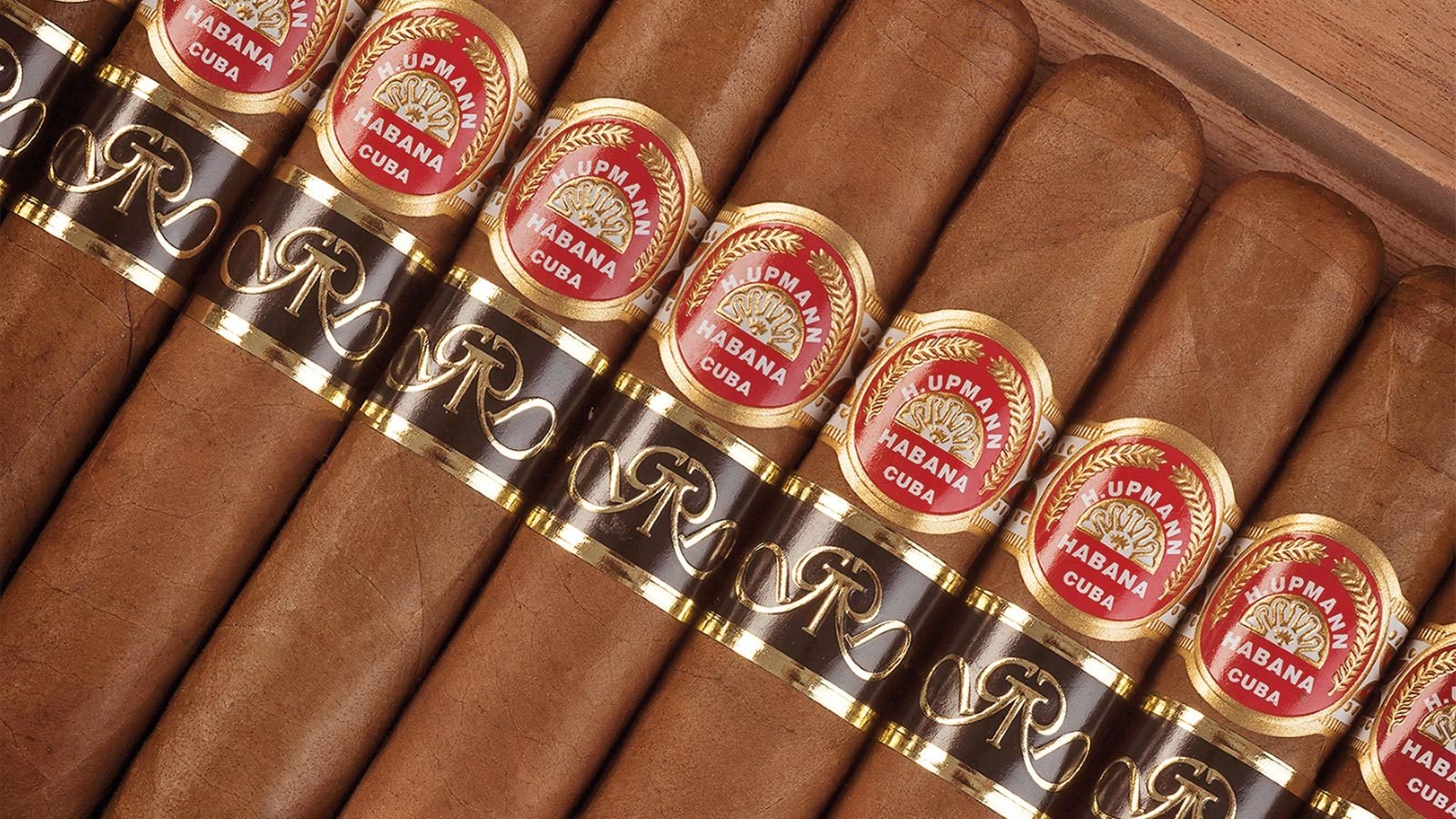
H. Upmann
Founded by brothers August and Hernan Hupmann in 1844, this brand revolutionized cigar distribution, store and transportation, since it was the first one to use the cedar boxes for storing cigars. H. Upmann, also, introduced the technology of preservation of cigars in aluminum tubes. Another interesting fact is that, it is said that President John F. Kennedy was a huge fan of this brand. Actually, according to some rumors, he ordered more than 1,000 cigars before the embargo was signed.
H. Upmann has about 40 models, featuring the largest Sir Winston and Monarcas vitolas, Connaisseur No. 1 (robust), Cristales (crown) which are the last cigars that still are preserved in glass tubes, Super Coronas (great crown), Royal Coronas (crown), Majestic (crown), Magnun 46 (great crown), H. Upmann No. 1 (lonsdale), No. 2 (figurative), 3 (crown) and No. 4 (petit crown).
Where to buy and appetite Habanos in Cuba
Currently, there are more than 27 brands of cigars protected by habano designation of origin. The Habanos Corporation, world leader in the Premium cigar market, is the one in charge of marketing this product. On that purpose, it uses an exclusive network, which is working in more than 150 countries around the world.
For buying habanos in Cuba, it is recommended to attend the official Habanos S.A. stores, which are located in all tourist spots and inside the hotel complexes all over the country. Besides, there are the Casas del Habano, which are specials stores and gastronomic institutions for buying and tasting habanos, or even to enjoy a “maridaje” with rum, cigars and coffee. At Casas del Habano, it is also possible to be assisted by an habano-somellier and a torcedor de tabaco, which provide the clients with a pretty exclusive service.
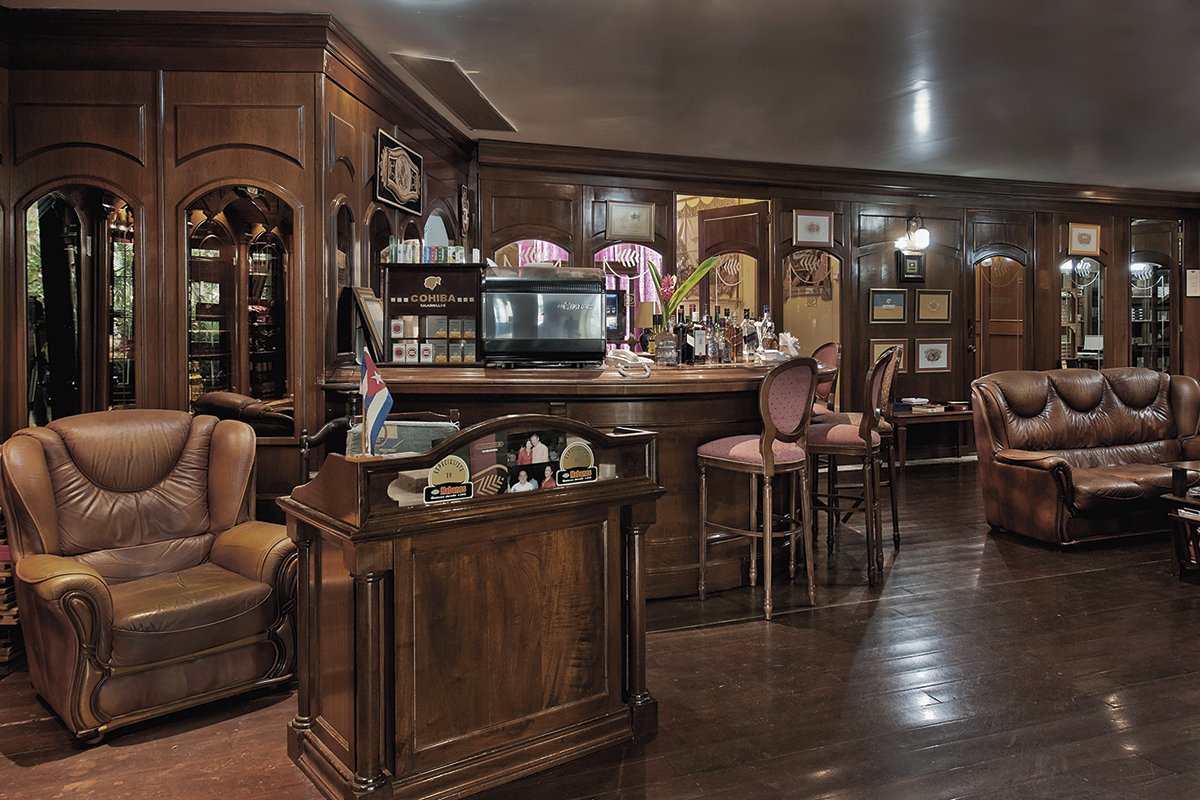
To make both, purchases and tasting cigars in Havana, it is recommended to visit specialized venues placed at the Meliá Cohíba, Meliá Habana, Hotel Nacional and the Meliá Habana Libre. Additionally, we recommend to visit La Casa del Habano 520, inside the Partagás factory, at Calle Industria No. 520 in Old Havana. Another fashionable place for consuming Habanos are La casa del Habano at Hostal Conde de Villanueva, which is placed in Mercaderes Street, No. 202, and La Corona tobacco factory, which is located in Agramonte street between Colón and Refugio, both in Old Havana.
My Daiquiri in El Floridita and my Mojito in La Bodeguita
“My mojito in La Bodeguita, my daiquirí in El Floridita” No doubt, the renowned phrase by Ernest Hemingway, takes you to one single destination, Havana.
Certainly, in Cuba, you will find the best Daiquiri in El Floridita and the best Mojito in La Bodeguita del Medio.
“My mojito in La Bodeguita, my daiquirí in El Floridita.”
No doubt, the renowned phrase by Ernest Hemingway, takes you to one single destination, Havana.
Conversely to other artists, the American writer decided to leave a mark at certain points of the city. Indeed, they are very famous places that are visited today by a lot of travelers who want to share his experience.
So then, it is time to know what made Hemingway stop by La Bodeguita del Medio and El Floridita.
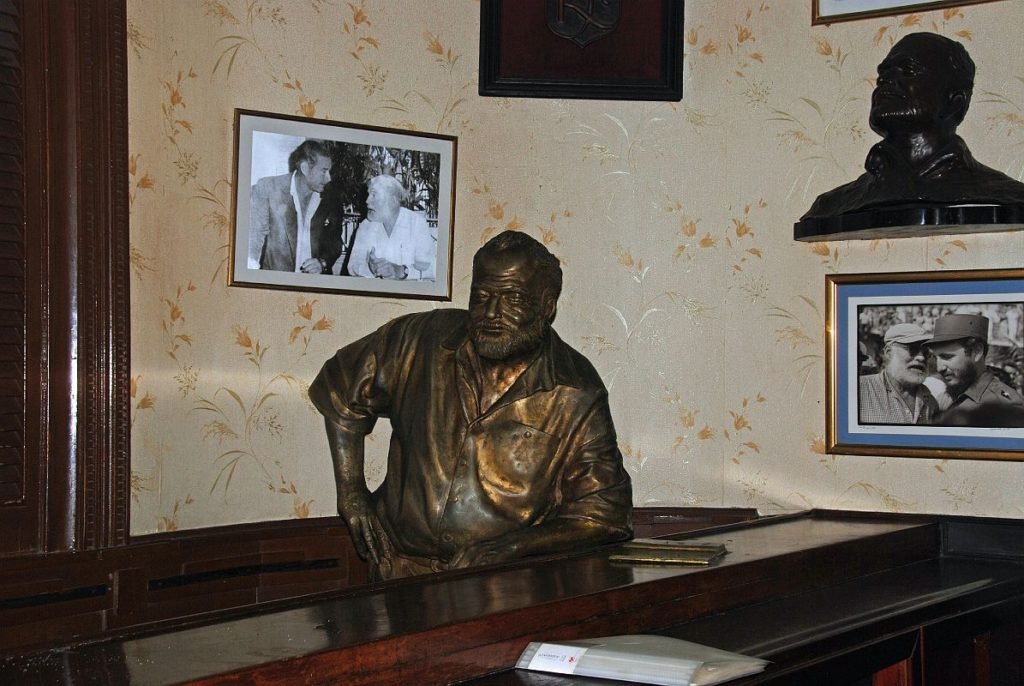
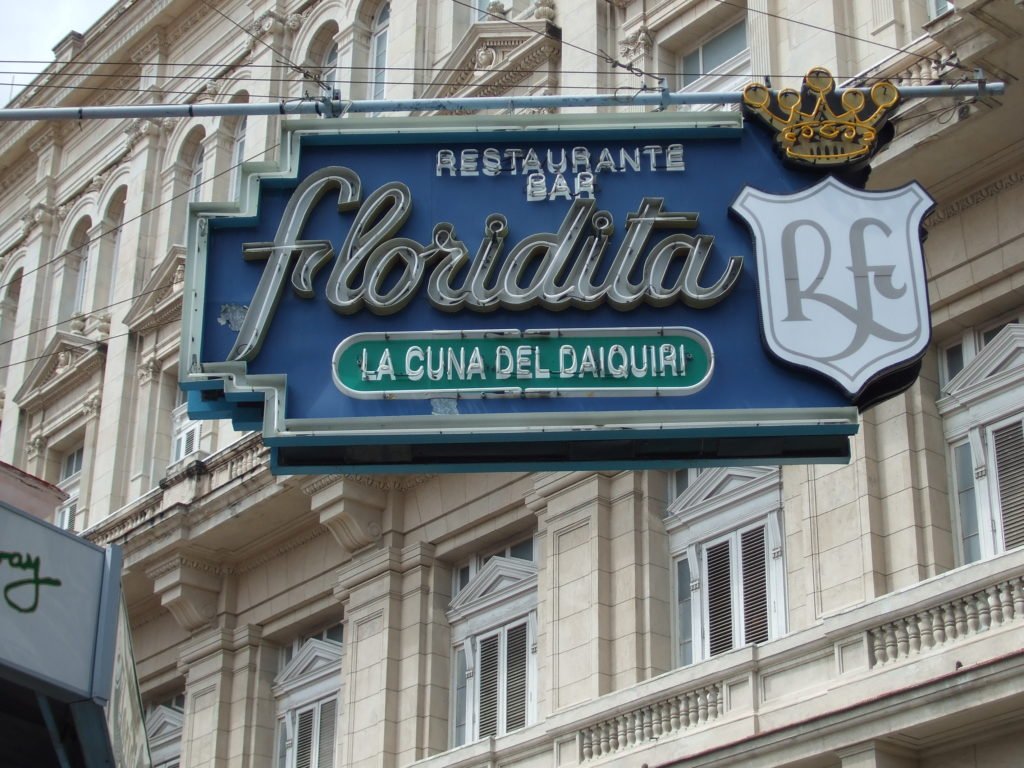
El Floridita
Cuba is proud to have El Floridita, the craddle of Daiquiri.
First of all, the place is a bar-restaurant founded in 1817. However, it was thanks to Hemingway that it became highly famous. The writer was staying at Hotel Ambos Mundos, (located fairly close to the bar) he made a stop by, every day to drink a Daiquiri.
According to those who new Hemingway, he could drink as many as 13 daiquiris just by one sitting. Probably, he was very fond of the cocktail. Truth be told, the place offers a warm atmosphere and he may have felt like home while being there.
On the other hand, to be honest, you will find a cheaper drink at any other place. Though you will miss the magic and authenticity.
Nonetheless if you come by, you will be part of history. Actually, the bar is surrounded by pictures of the artist. In fact, what makes the spot so distinctive is a normal size bronze statue of Hemmingway drinking his cocktail.
For those reasons, other personalities visited the bar as well.
- To the boxer, Rocky Marciano
- The writer, Tennessee Williams
- The film director, Francis Ford Coppola
- The French fashion designer Francisco Paco Rabanne
- The actors, Jean Paul Bel Mondo and Matt Dillon
- The musician Jean Michel Jarre
Similarly to its fame in cocktails, clients can enjoy a wonderful meal. The restaurant offers Cuban and international food. Additionally, it will give you some extra time for mingling around this legendary place.
Would you like to have a Daiquiri?
Although it may vary in flavors and size, this is a standard option of the tropical cocktail.
Ingredients
- 2 ounces rum, Havana Club 3 Años (or any white rum)
- 1 ounce fresh-squeezed lime juice
- 3/4 ounces simple syrup
Directions
Combine ingredients and shake vigorously with ice for about 10 seconds. Strain into chilled highball glass. Garnish with a lime wheel, if desired
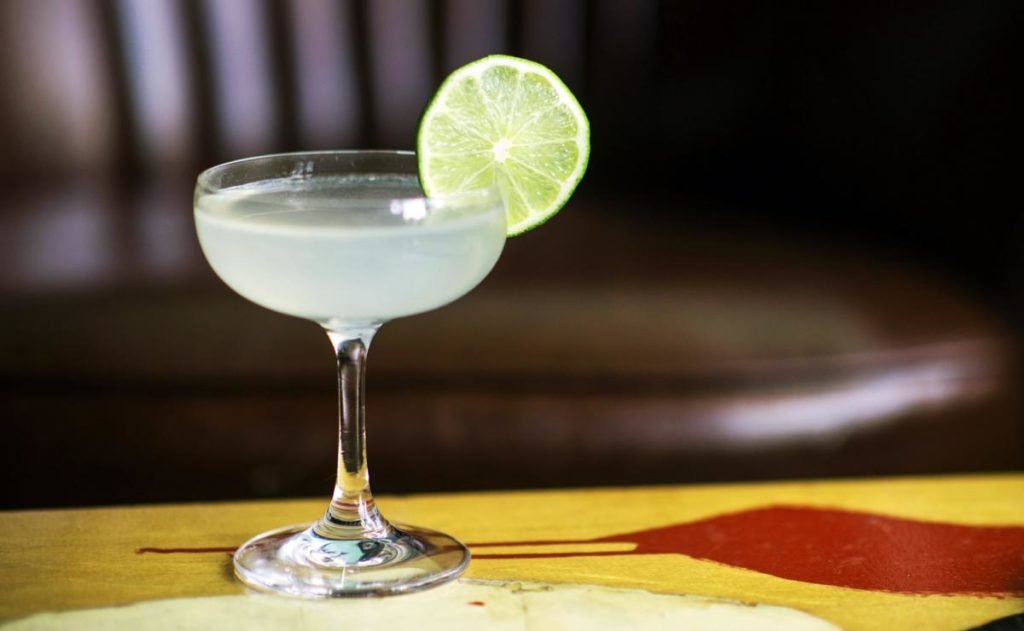
La Bodeguita del Medio
Unquestionably, this is one of the greatest locations in Havana. Likewise, the place is located in the heart of the city, close to Plaza de la Catedral (Cathedral Square).
In fact, the name of the restaurant has a very particular history. Actually, in past years bars were located in the corners of the streets. However, this one was built in the middle, that is why it is called Bodeguita del Medio (kind of a cellar located in the middle of the street).
Due to the good location, along with the excellent service, the place became very well-known. So then, it was home of many artists and common people who preferred gathering around.
Consequently, Ernest Hemingway, who was a bohemian of his time, visited the bar every day for a Mojito. Thanks to him, the drink became so popular in the bar that today it is its classic cocktail.
Nevertheless, it was in 1950 that the owner decided to start serving food as well.
Nowadays, La Bodeguita del Medio is a very common touristic attraction. For granted, every person that visits Havana will, at least, stop to drink a Mojito at the Bar.
Yet, another singular charm is that the walls are signed by visitors.
For example, some personalities that signed its walls were:
- Pablo Neruda
- Gabriel García Márquez
- Gabriela Mistral
- Agustín Lara
- Nat King Cole
- Nicolás Guillén
- Julio Cortázar
- Joan Manuel Serrat
- Margaux Hemingway
- Salvador Allende

La Bodeguita del Medio
Would you like to have a Mojito?
Do not worry if you are at home, we will take the drink to you.
Although the Cuban Mojito needs hierbabuena, a typical leave that may be substituted by a mint leave.
Enjoy it.
Ingredients
2 teaspoons sugar
10 fresh mint leaves plus 1 sprig for garnish
Juice of 1/4 lime
Ice
2 ounces rum, such as Bacardi Superior Rum
Splash club soda
Directions
Combine the sugar, mint and lime juice in a 12-ounce glass and muddle together. Fill the glass with ice, and then pour in the rum. Shake in a shaker until well mixed, then pour back into the same glass. Fill with club soda, and garnish with mint, and a straw.
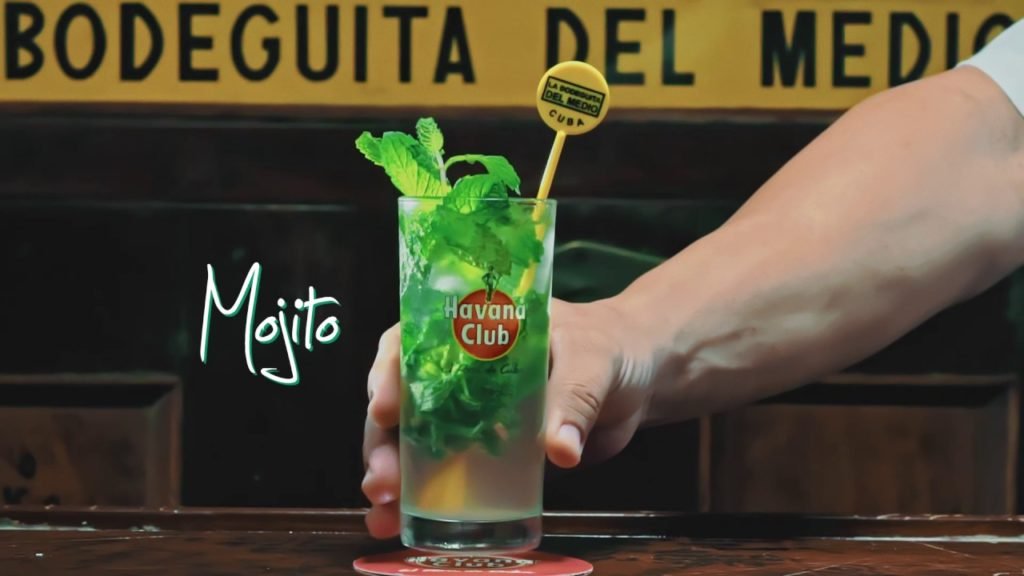
Briefly, we should point out that Ernest Hemingway fell in love with Havana. There was a little something waiting for him at every corner. Whenever you get the chance, do not hesitate: follow his footsteps.
You might also like…
Hotels and the History of the Mafia in Havana
At the beginning of the 20th century, the Mafia dealt the cards on Havana. Just like in a Coppola movie, famous gangsters established their business in the Cuban capital. Even if this topic is a kind of taboo, we can still follow their trace reaching the history of emblematic hotels which were part of the scenario of some Mafia deals.
The Mafia arrived in Havana during the 1920s, as a consequence of the Prohibition, when alcohol consumption and trade in United States was forbidden. Rum and other alcoholic beverages were smuggled from Cuba to the States.
Over the years, the actions of the mafia were radicalized. In the 1930s, the famous New York Jewish-gangster Meyer Lansky, the right-hand man of the New York Cappi di tutti cappi Charles “Lucky” Lucciano, came to Havana.Four mafia “families” were established in Havana. There were led by Amleto Battisti, Amadeo Barletta, Santos Trafficante and Mayer Lansky. Cocaine trafficking, prostitution, gambling and betting houses came to be completely controlled by these “families”.
Meyer Lansky settled almost permanently in suite 829 of the Hotel Nacional. According to testimonies collected in the book “The Secret Life of Meyer Lansky in Havana”, the gangster was instantly captivated by the hotel sobriety and the maritime landscape reminiscent of Naples and Miami.
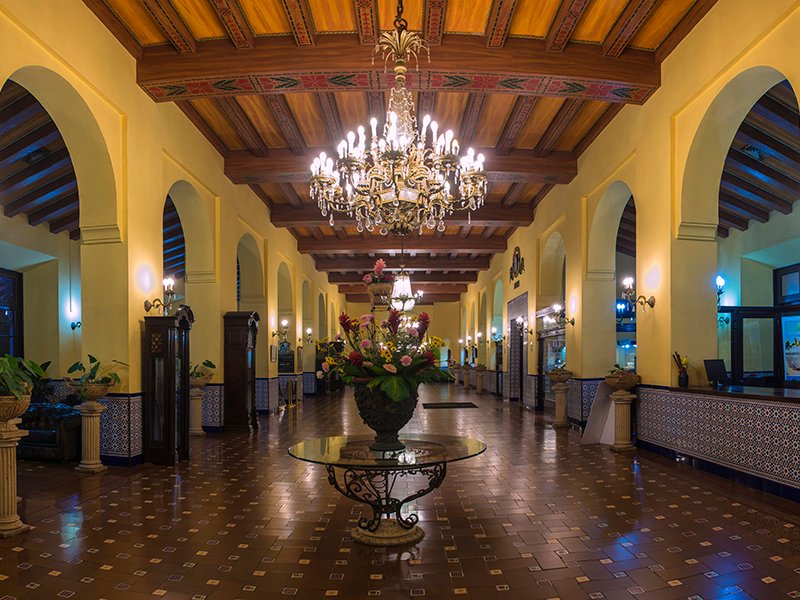
In the 1930s and 1940s, the Hotel Nacional became the Meyer Lansky headquarters for ruling his underworld empire in Cuba. In December 1946, a historical meeting of the Cosa Nostraand the Mafia Union was held in Hotel Nacional. Chaired by Lucky Lucciano, representatives from all the mafia “families” in the United States attended the summit: Vito Genovese, Joseph Bonnano, Joe Adonis, Albert Anastasia, “Dandy” Phil Kastel, Charlie Rocco, among many others.
The main purpose of this meeting was to establish political and business guidelines for organized crime operations in Cuba and the United States. That historical episode is referenced in the movie “The Godfather Part II”, when the character Vito Corleone flew to Havana to attend the meeting. It is also interesting, that the famous singer Frank Sinatra “The Voice”, came to the Hotel Nacional specially to entertain the Mafia Summit ’46 nights.

Sevilla Biltmore in another hotel whose history is clouded with the hands of the mafia in Havana. In the 1920s Sevilla Biltmore was one of the most luxurious and popular hotel facilities in Havana. Located next to the Paseo del Prado, it was inaugurated in 1908 as the first luxury hotel in Cuba, and for several years it was considered the most elegant and comfortable hotel in Havana.
In the late 1930s, Don Amleto Battisti took ownership of the hotel through bribes and fraudulent business and established there his headquarters for commanding the actions of his “family” in the business of vice, gambling, prostitution and other organized crime activities.Under Don Amletto´s tutelage, the Sevilla Biltmore hotel was thoroughly renovated and modernized.
A great casino, a cabaret and a luxury restaurant were opened and its famous Roof Garden became the scene of cultural and social events of the time. Celebrities such as Josephine Baker, Enrico Caruso, the former Panamanian President Arnulfo Arias, Herbert Matthews, the rumba player Tongolele, Bola de Nieve, and other no less notable character were frequent guests there. Al Capone himself rented the 6th floor of the Hotel Sevilla for his Havana clique.
“Las Vegas of the Caribbean”
In the 1950s the Mafia had, not only economic power but a strong influence in the local politics. Cuban president Fulgencio Batista and Meyer Lansky promoted an architectural project to reform Havana city into the “new Las Vegas of the Caribbean”. It consisted in massive construction of new hotels and large casinos all over the Havana coastline.
On that purpose in 1955 the Hotel Law 2070 was approved. This law offered tax incentives, loans and casino licenses to anyone who wanted to build hotels of more than US $ 1,000,000 or nightclubs for $ 200,000 in Havana.

Covered by this law, in 1957 the Club Capri was inaugurated. This facility combined a hotel and a casino in the center of Vedado. The owner of the Capri was Santo Trafficante Jr, and was operated by Nicolás Di Costanzo, Charles Turin alias Charley “The Blade” and Santino Masselli alias “Sonny the butcher”.
The american actor George Raft was the public image for the hotel club.As expected, El Capri was a dark business center, becoming the official meeting point of the North American mafia in Cuba. Meyer Lansky had a suite just for him on the top floor of the hotel.
In December 1957 Meyer Lanzky inaugurated his biggest hotel project in Havana: the Habana Riviera. The total investment cost was around 18 million dollars.The hotel had a luxury cabaret called “El Copa Room” and a large casino.
The casino acoustics was designed so that the sound of the chips and slot machines spread to other areas of the hotel in order to seduce guests.

The Riviera is a Master Piece of the Modern Architectural Movement in Cuba. It has one of the best views in Havana. Even today, the Riviera remains as a symbol of the mafia power in the Havana of 1950s.
Due to the political and economic freedom for organized crime in Cuba, the power of the mafia expanded more and more. Every night, about 10% of the income obtained in Cabaret Sans Souci and the hotels Sevilla Biltmore, Commodoro, Deauville and Capri, as well as the Lansky casinos: the Habana Riviera, Nacional and the Montmartre Club, was entered into the personal accounts of corrupted Cuban politicians.
This situation continued until the Cuban revolution in January 1959, which ended Fulgencio Batista´s the government. In 1960 all casinos and hotels were nationalized. At the same time gambling was banned by law in the country leaving millions in losses for the mafia bosses.
Plaza de la Revolucion Havana: An Iconic Place of Cuba
Plaza de la Revolucion in Havana is something that is considered for most tourists as a must-see. Discover all the information about the history of the places, what you will see there, how much it costs, schedules and more.
The Plaza de la Revolucion in Havana is one of the most famous and important tourist centers, not only because of the images of Commander Che Guevara and that of Camilo Cienfuegos, which are distinguished in their surroundings but also because of the striking monument to our national Hero José Martí.
The square has a unique historical value because it has been the scene of many of the main acts and events of the Cuban Revolution. Nowadays its rooms serve as exhibition halls and for the celebration of significant events in the history of Cuba.
CONTENT
- When was the Revolution Square in Havana built?
- Location of Plaza de la Revolucion in Havana
- Interesting facts about the Plaza de la Revolucion
- The Square
- The Obelisk
- José Martí Memorial
- What is contemplated around the Revolution Square?
- What are the most relevant events that occurred in the José Martí Revolution Square?
- Plaza de Revolucion Opening Hours and Days
- Tours to Plaza de la Revolucion in Havana
When was the Revolution Square built?
Historians tell that the Revolution Square was conceived in the 1940s with the purpose of erecting a monument to the National Hero of Cuba, on the site where the Hermitage of the Catalans was located.
However, the work did not begin until 1952, under the order of Fulgencio Batista, who considered this as the perfect way to clear his image marred by violence.
For this, the government promoted a forced public collection, in addition to raising taxes and using other methods of obtaining money that would allow to raise funds for the construction of the monument.
Construction began in 1953 and ended in 1958 the obels and the statue of Marti were erected but the surrounding areas and the gallery were still missing.
In 1959, at the beginning of the Revolution, it was decided to close its doors to the public as a museum and it is then that the base of the monument begins to be used for farewells of personalities duels and other activities.
Already in 1995, due to the centenary of José Martí fall in combat, which occurred on May 19, 1895, the idea of opening the site as a memorial was resumed on May 19 the same year.
Being inaugurated on January 27th, 1996 by Fidel Castro Ruz, leader of the Revolution as a memorial to honor our national heroe José Martí.
Address of Plaza de la Revolucion Havana
The Plaza the la Revolucion in Havana is located in the municipality with the same name.
Interesting facts about the Plaza de la Revolucion Havana:
With 72,000 square meters, Plaza de la Revolucion in Havana is one of the largest squares in Cuba and the world.
Although its original name was Plaza Civica (Civic Sqaure), its international fame began with the triumph of the Cuban Revolution, and hence the name it adopted since then.
The Square:
The place formed by a five-pointed star, has five rooms. First two dedicated to spreading the life and work of José Martí. In which drawings, prints, iconographies, editions of his books, documents, and original manuscripts are shown, such as the first letter written by Marti to his mother, at the age of nine, among others until the note he sent hours before his fall in Dos Ríos, to General of the Mambí Army, Máximo Gómez.
The third rooms exposes images and documents related to the construction of the Square. There is an auditorium where conferences, book presentations and concerts are held with Small orchestras with a capacity for one hundred people.
Here, awards are given annually to the winners of literary competitions or concerts by pianists such as Frank Fernández are enjoyed.
There is also a room dedicated to children, created with the purpose of fostering love for the apostle. Inside there is a unique article, a Venetian ceramic mural authored by the Cuban artist Enrique Carabia.
The Obelisk:
The tower constitutes the highest point of the city of Havana, it is a concrete structure clad in gray marble, very clear, with a little more than 78 meters in diameter in its lower part and stands 142 meters to the lighthouses and flags.
As it grows, the pyramid narrows. There is also an internal elevator of 90 meters of travel and a staircase of 579 steps.
On the top floor, 129 meters above sea level, the beauty of Cuban Capital is appreciated in all its magnitude and on the floor, through the cardinal points, the visitor can get know about curious facts such as their situation: to the North, to the south, east and west as well as the distance to different regions such as Jerusalem 11022 kilometers, La Paz at 4655, 7454 from Madrid, Spain and 1782 from Mexico City.
In front and independent of the tower, there is the Jose Martí Memorial since 1958.
José Martí Memorial:
In the area of the base of the monument you will find the José Martí stuatue in a sitting and thoughtful position. The statue is 18 meters high and consists of 52 blocks of white marble, the work of Cuban artist Juan José Sicre.
It is placed 139 meters above the sea, this being the ideal way to revitalize his ideology when he sentenced:
“It is necessary to rise like the mountains to be seen from afar”
The memorial is surrounded by six pillars representing the provinces in which formerly the national territory was divided, with the shields of each one of them.
What is contemplated around the Plaza de la Revolucion Havana?
The Plaza de la Revolucion is surrounded by the headquarters of the Ministry of Interior of Cuba, formerly known as the Court of Auditors.
On its facade is an image of Ernesto Che Guevara made of cast black glass, the work of Cuban artist Enrique Ávila.
Under the image of “Che” is also recorded the most famous motto of the commander: “Hasta la victoria siempre”, which means “Ever onward to victory”.
Another of the nearby buildings is the Ministry of Information, Technology and Communications that displays the image of the hero of the cuban Revolution Camilo Cienfuegos with his phrase “You are doing well Fidel!”, this image was placed in the year 2009.
On the east and west sides you can find the José Martí National Library, the National Theater of Cuba, the latter, home of the “Café Cantante” nightclub and the Ministry of the Armed Forces.
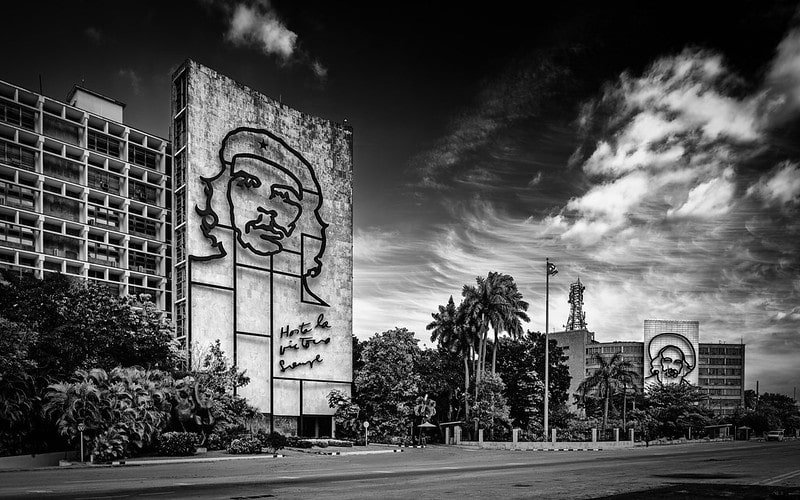
What are the most relevant events that occurred in the José Martí Revolution Square?
The historic Revolution Square has witnessed major international and mass events in recent years.
These events include:
- The first parade of the popular militias made up of workers and peasants on May 1, 1959.
- Crowd concentration of the people in the Revolution Square, on September 2, 1960, in support of the First Declaration of Havana. Photos of this important fact are shown in the halls of the square.
- On September 28, 1961, the act for the I Anniversary of the Committee for the Defense of the Revolution (CDR) was held in the square.
- The people gathered in the Revolution Square supported the foreign policy of the Revolutionary Government and approved the II Declaration of Havana on February 4, 1962.
- On May 1, 1980, the square houses the largest mass act of the revolution and revolutionary reaffirmation in response to the maneuvers executed by the United States Government to disembark at the Guantanamo Base.
- The second concert Peace without Borders of 2009, the masses officiated by Pope Benedict XVI and Francisco, in 2012 and 2015, respectively.
- On March 7, 2013, Tribute is made for the death of Venezuelan President Hugo Chávez Frías.
- The mass act on the occasion of the death of the leader of the Revolution Fidel Castro in 2016.
Hence, the Revolution Square has become a meeting place for the Cuban people to celebrate or commemorate the successes of the Revolution, as well as the parades of May 1st, and acts of solidarity with brotherly peoples, anniversaries of the assault on the Moncada Barracks, the Triunfo of the Cuban Revolution and other important events of Cuba that marked a before and after in history.
What time of day can you visit the Revolution Square in Havana?
The José Martí Memorial in the Revolution Square is open to the public every day, from 9:00 a.m. at 5:00 p.m. Admission is 8CUC tourists, having the possibility to visit base and viewpoint.
For children the visit to the base is free
Mention that upon arrival you will find a specialized staff, prepared and with full knowledge about the life and work of the apostle José Martí.
Tours to Plaza de la Revolucion in Havana
From Varadero
On the other hand, if your lodging place is in Varadero and you probably want to visit the Revolution Square, as well as all the places of interest in Havana, including, Old Havana, El Capitolo, Cigar Factory, Plaza de Armas, Rum Museum among other places chosen by you. You can request one of our day trips to Havana since all our tours to Havana include a visit to Revolution Square and in addition to that, all of them are also all 100% customizable in order to visit the preferred places by our clients.
From Havana
If you are staying in Havana you probably want to visit all the iconic places of the city, and this without a doubt includes the Plaza de la Revolucion with the Jose Marti Memorial, in such case, we invite you to get in contact with us since we can either arrange full-day trip through all the old Havana and modern Havana, including a visit to the Revolution Square or we can arrange a punctual visit to the Square for the period of time that you set.
You might also like…
5 Reasons Why Canadians Love to Travel to Cuba
In this post we tell you what are the main reasons why Canadians prefer to travel to Cuba instead of other destinations in the Caribbean.
Cuba is an island that is located between the Atlantic Ocean and the Caribbean Sea, next to the Dominican Republic, Jamaica, and relatively close to Mexico. And we all know that Cuba is one of the favorite places for Canadian Travelers when they decide to go on vacation, but. Why Canadians love to travel to Cuba instead of other destinations in the Caribbean? In this post I present to you the 5 main reason why this happen 🙂
You may also be interested in reading the 13 things you should NEVER do in Cuba as a tourist.
Our Best Classic Cars Tours in Cuba
#5 – Canadians Love to travel to Cuba because Safety
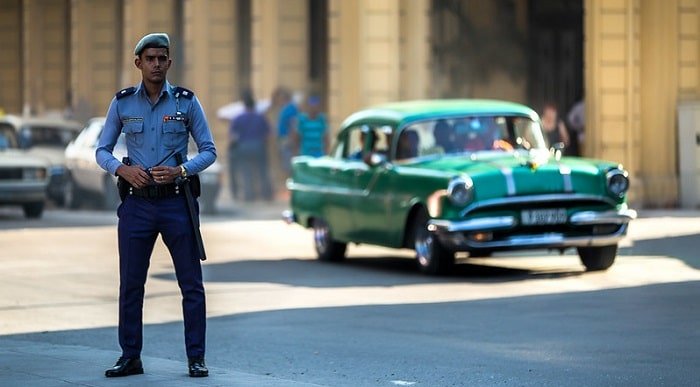
Cuba, despite being a poor country, is one of the safest in the entire hemisphere. Security is almost total since there is no drug or organized crime. Tourists walk freely around the area without any major worry.
Although it is very common from time to time to find some military officers on the beach, these are only there to prevent street vendors from approaching tourists with the intention of offering their products.
#4 – Beautiful Beaches
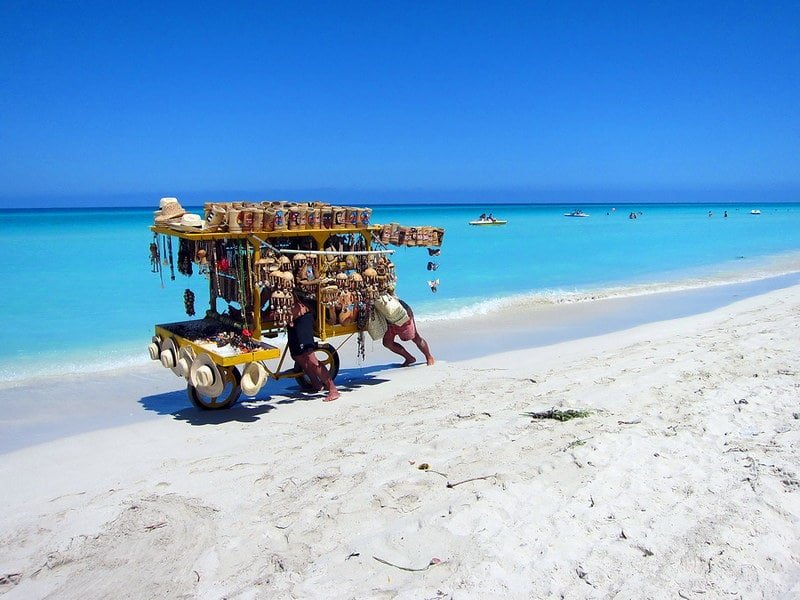
In Cuba, you can find some of the most beautiful beaches not only in all of America but all over the world. It is not surprising that Varadero Beach has been in the second position in the category of Best Beaches in the world of TripAdvisor.
Although Varadero is the favorite sun and beach destination, since it is only 150km from the Cuban capital, there are also some hidden gems on the island, whose beaches are still considered “virgin” by some locals. I refer to the Beaches of “Los Cayos”, which includes Cayo Guillermo, Cayo Coco, and Cayo Santa María.
#3 – Because of the kindness of the Cubans
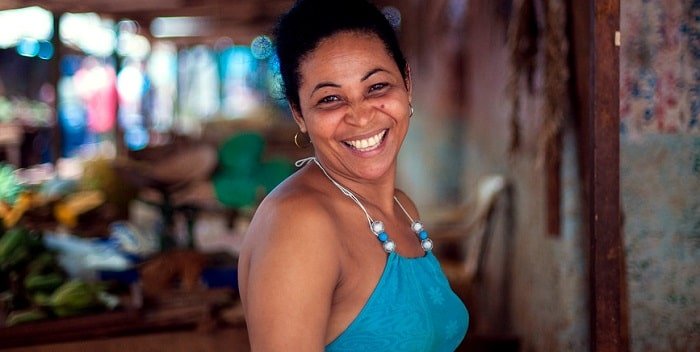
Cubans are really exceptional people, despite the difficult economic situation that many of them suffer, they always have a welcome smile and are always in a good mood ,and this is without a doubt one of the main reasons why Canadians Love to travel to Cuba.
When you meet a Cuban for the first time, it gives you the impression that you have known him/her for a lifetime.
It happens very often that some Canadians or other tourists, in general, make some kind of friendship with hotel workers, and suddenly they are having dinner one night at their home and meeting their whole family.
#2 There is no Capitalism
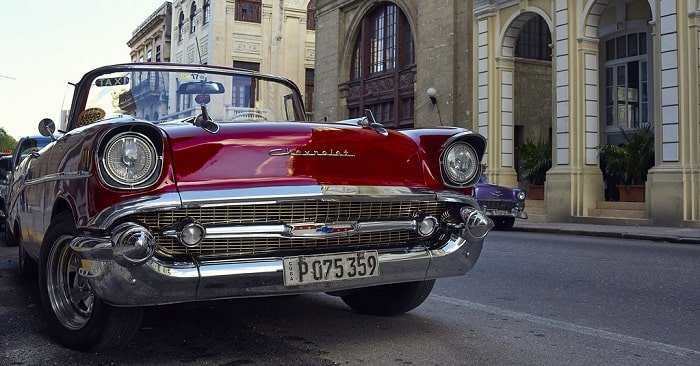
Unquestionably the sensation of walking through the streets of Havana, Varadero or any other city in Cuba without having commercials all over is something that really feels good.
One can appreciate the true face of the city and the story that tells its facades. Without a doubt, when it will happen that the Cuban system changes and foreign investment comes, followed by McDonalds and Wallmart posters everywhere, that day, we will lose many Canadian friends, since they prefer to see a Natural Cuba.
#1 – Because of its Traditions
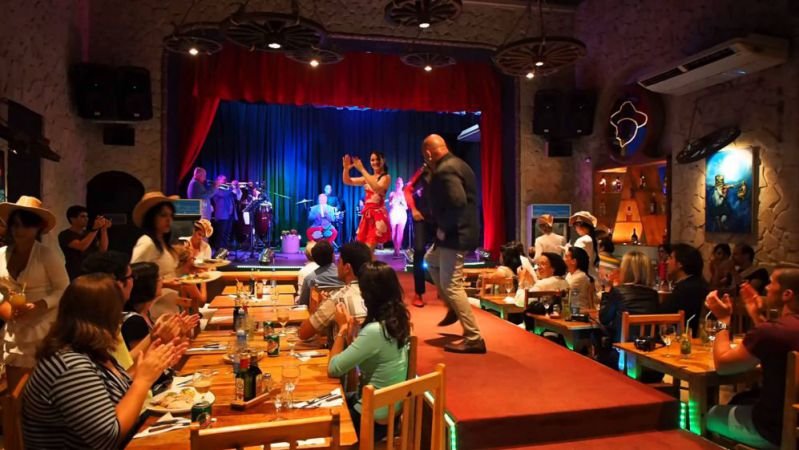
Many Travelers simply marvel when they arrive in Cuba for the first time, in addition to the warmth of welcome radiated by the Cuban people, they also discover that this beautiful island is full of beautiful traditions, such as traditional Cuban music, food, coffee, and the Habanos.
There are many travelers who have confessed to us that Cuba is like their second home, that sometimes they feel that in some way it is here where they belong, they love Cuba, its people, and its customs. And they are friends who always come back, they are friends from Canada who love Cuba.
If you think I have forgotten to mention a specific reason why the people of Canada love to travel to Cuba, do not hesitate to leave it in the comments
You may also like
Chevrolet 1957
The 1957 Chevrolet, unlike any other American car and contrary to industrial practice at the time, was manufactured for 10 years.
It is a car introduced by Chevrolet in September 1956 for the 1957 model year.
Subsequent models have been made for the Chevrolet of the following years, but the 57, has always been a very popular and requested classic car.
They are often restored to their original state and sometimes modified, but they remain an automatic icon.
Do not hesitate, come to Cuba.
Here you can enjoy these walking wonders, which despite the years continue to travel through the Cuban streets.
Aspects to be treated:
- What were the versions available for the year 1956?
- History of the Chevrolet ’57.
- Popularity of the Chevrolet ’57.
- What type of engine used the Chevrolet ’57?
- What were the Gearbox alternatives in a Chevrolet ’57?
- Curiosity.
What were the versions available for the year 1956?

Chevrolet, due to the appearance of new car brands, found itself in a real challenge: to ensure that the 1957 had the public’s favor coming from two very good years with the 1955 and 1956 models that had established very high parameters in terms of Quality, design and technology.
By September 11, 1956, three models of the series were available:
- the basic one, called “Chevrolet 150”,
- the intermediate, called “Chevrolet 210” and
- the star version: Chevrolet BelAir that corresponded to the luxury models
- The basic version: 150
These were models with minimal ornaments.
Bodyworks:
4-door sedan with two doors, utility sedan and a two-door Wagon Handyman station with or without rear windows.
The latter to be used in the transport of light merchandise. Those that could be called delivery.
The side moldings version 150, included very small side sockets, also tire rates that barely covered the center of the tires.
-
The average version: 210
With greater exterior ornamentation and chrome.
Bodyworks:
Coupe with two doors, with and without central stops, four doors with or without central stops, the same as station wagon with two and four doors and the possibility of having in the latter with seats for six or nine passengers.
This version, had larger sockets, but not reaching those proposed for the Belair series. Also minimum size tire rates.
-
The Bel Air version
Definitely the most luxurious version.
Bodyworks:
Two-door coupé with or without central stops, four-door sedan with or without stops, a beautiful convertible coupe and the four-door Station Wagon, plus a luxury two-door station called Nomad.
In the Belair series, in addition to the sockets that were used in the 210, two imposing aluminum strips of almost triangular shape were included for the sides of the car.
As well as chrome moldings for the tail fins and tire rates that completely covered it, for which outstanding ornaments were acquired to be mounted in the center of these.
History of the Chevrolet ’57:
 Initially, General Motors executives wanted a completely new car by 1957, but production delays made the 1955-1956 design necessary for another year.
Initially, General Motors executives wanted a completely new car by 1957, but production delays made the 1955-1956 design necessary for another year.
Ed Cole, chief engineer of Chevrolet, dictated a series of changes that significantly increased the cost of the car.
These changes helped make the Chevrolet ’57 a classic.
They include a new instrument panel, the closed hood, and the relocation of the air ducts of the headlight pods.
The fifteen-inch wheels from previous years were replaced by fourteen-inch wheels, with the purpose of giving the car a lower posture.
Another change was the use of a wide fence to give the car a wider appearance of the front.
The now famous ’57 Chevrolet in the queue were designed to double the wide look in the rear.
The base engine was a 6-cylinder in-line called the Blue Flame Six. The engine was running smoother than the V8.
The carburetor came from a single barrel carburetor.
Chevrolet ’57 Popularity:

From a numerical point of view, the Chevrolet ’57 was not as popular as General Motors had expected.
Despite its popularity, rival Ford Motor Company sold more than Chevrolet for the 1957 model year, for the first time since 1935.
The main cause of the displacement of Ford sales was the fact that the ’57 Chevrolet had tubeless tires, the first car with this.
This scared them away from Chevrolet sales to those of Ford because many people do not trust the new design without an air chamber. Ford introduced a new body design that was long, shorter and wider than last year’s offer that helped Ford sales.
However, the 1957 Ford is not as appreciated by collectors today as the 1957 Chevrolet.
Throughout the 1960s and 1970s, the Chevrolet ’57 was a popular used car and much appreciated “street machine” or race car in 1957.
The ideal size of ’57, combined with its relatively light weight compared to the most recent full-size cars, made it a favorite among drag racers.
The engine compartment was large enough to fit in GM’s large block engines, for the first time in 1958 and popularized in the 1960s by The Beach Boys in the song “409.”
.
What type of engine used the Chevrolet ’57?
 There were three options, a basic six-cylinder in-line, of 3,849cc called Blue Flame Six that was already available for De Luxe models.
There were three options, a basic six-cylinder in-line, of 3,849cc called Blue Flame Six that was already available for De Luxe models.
The 1957 model offered a power of 140 HP. 5-bed engine with a Rochester carburetor.
The big news: the renowned and famous V8 engine of 4,340cc and small block used for the first time in 1955 and 1956 that produced 162 or 170 HP, respectively.
And finally a new V8 with greater displacement, could give a power of 185, 220, 245, 250, 270 and 283 horses, depending on whether one or more carburetors and various mechanical adjustments were incorporated.
The new engine at peak performance achieved the amazing power of a horse for every cubic inch of travel.
For the first time in Chevrolet’s history, they presented a mechanical fuel injection system called “Ramjet” made of aluminum, and that was constituted in a whole technological innovation and even more so in a low-priced vehicle, as was the case of Chevrolet.
What were the Gearbox alternatives in a Chevrolet ’57?

Chevrolet offered several gearbox alternatives: a three-speed manual gearbox, operated from the steering column, (steering wheel lever) which it could have, or not.
In addition the well-known two-speed Powerglide automatic transmission forward (available on Chevrolet models since 1950) paying $ 188 more.
And the new three-speed automatic Turboglide adding to the price of the vehicle 230 dollars.
There were also many options available, to make the car more comfortable and luxurious.
Between them:
- In 1957, Chevrolet began adding safety features such as “crash-proof locks” (first added in 1956), padded dashboards, and safety-style steering wheel with a recessed center.
- 1957 was also Chevrolet’s first offer of a turbine transmission, known as the Turboglide.
- One element of the mounted panel was the traffic light spectator, a corrugated plastic visor that was installed just above the speedometer.
Because the roof extends in front of the driver, it is difficult to see general traffic lights.
The traffic light viewer captures the reflection of the traffic lights above so that the driver does not have to lean forward to see beyond the edge of the roof.
Curiosity:
The Chevrolet ’57 won the 49 Grand National “cup” NASCAR races (more than any other car in NASCAR history).
He also won the Southern 500 (in 1957, 1958 and 1959); becoming the only car to win the 500 three times.
The first victory of a Chevrolet ’57 in a Formula One Grand National Series race was 1957 Virginia 500.
The ’57 also won 26 NASCAR “convertible” races, more than any brand, and won all three possible driving championships.
The first in convertible class in the 1959 Daytona 500 was a ’57 driven by Joe Lee Johnson.

